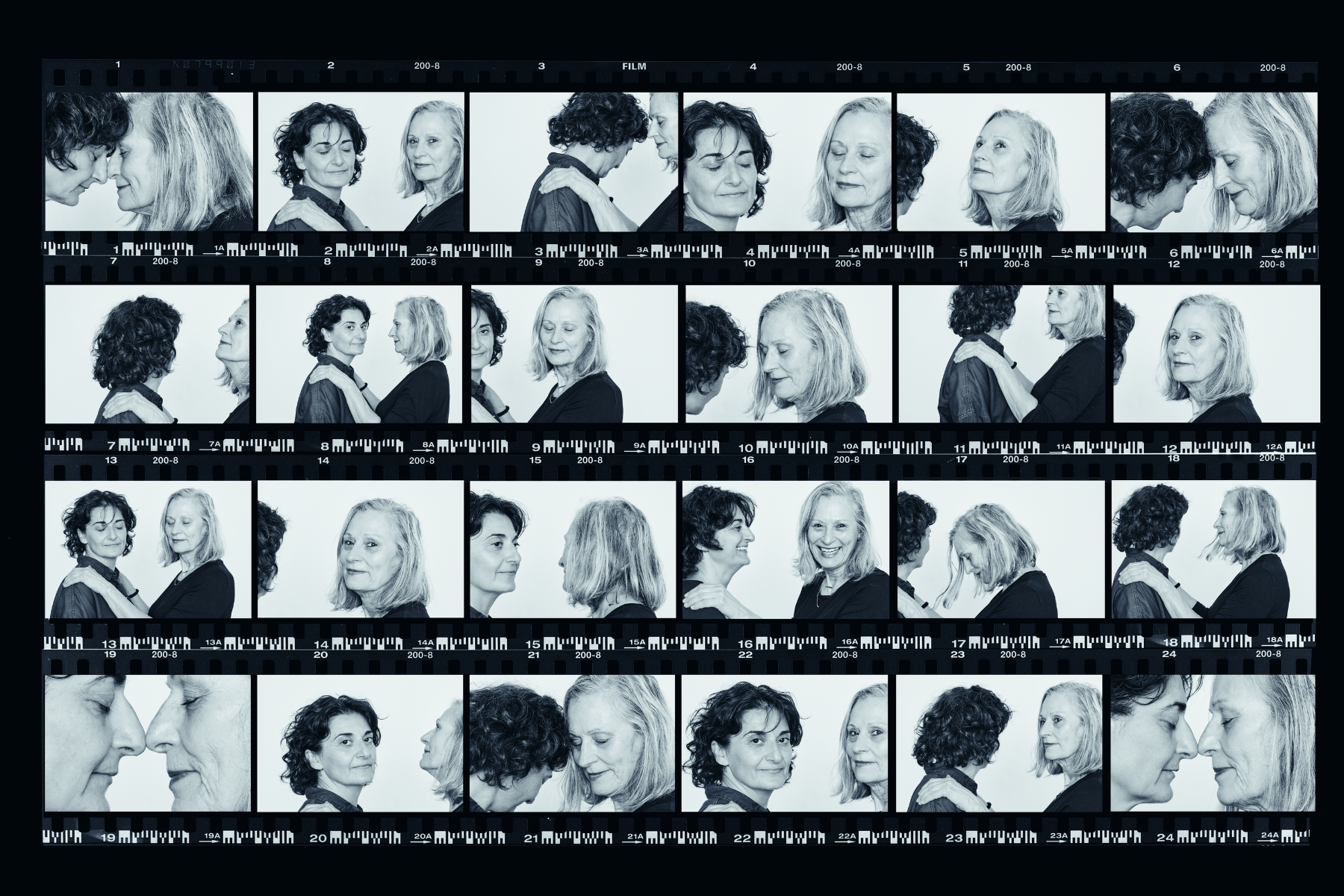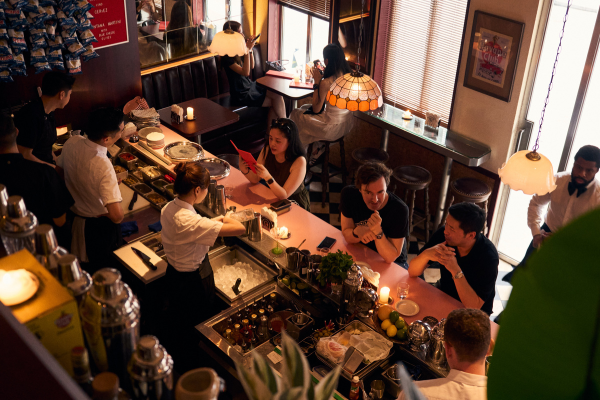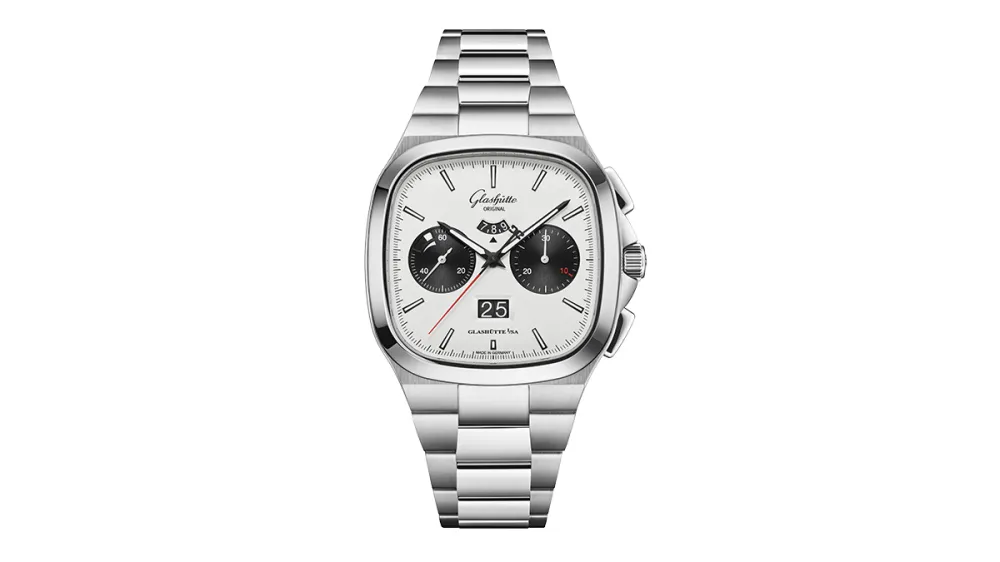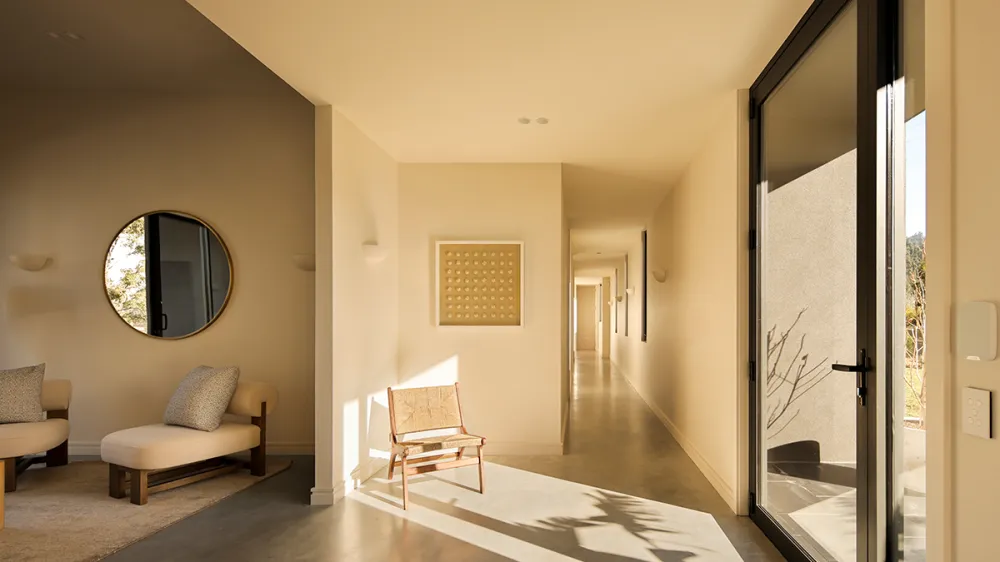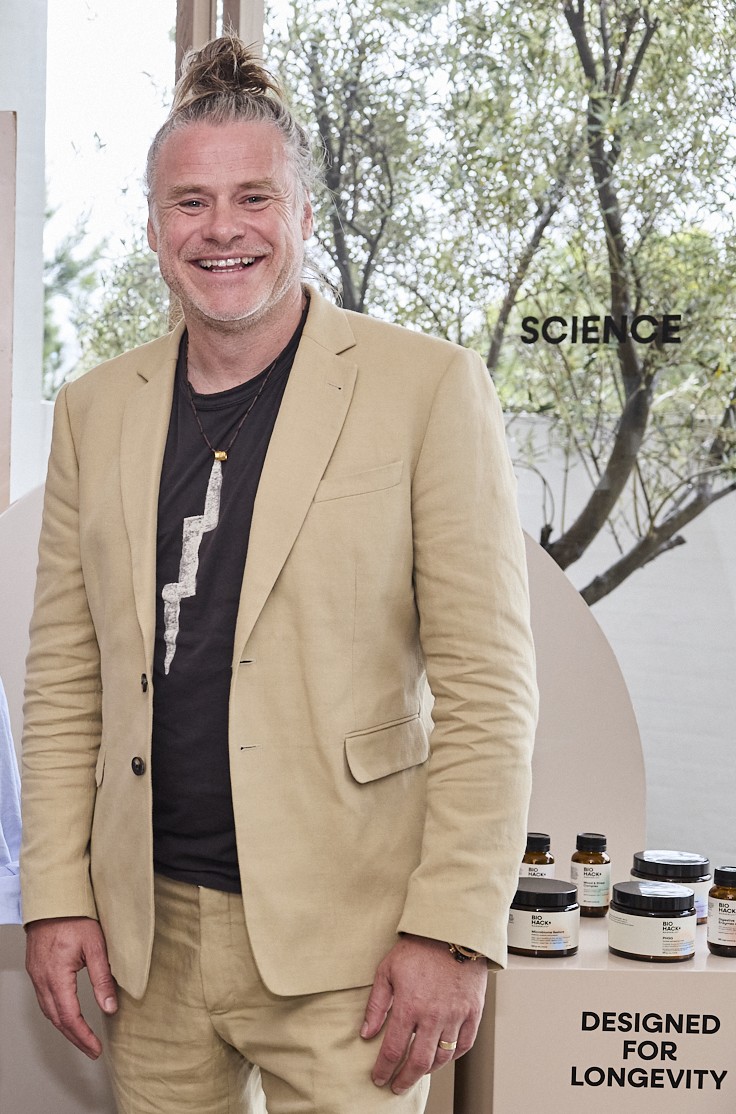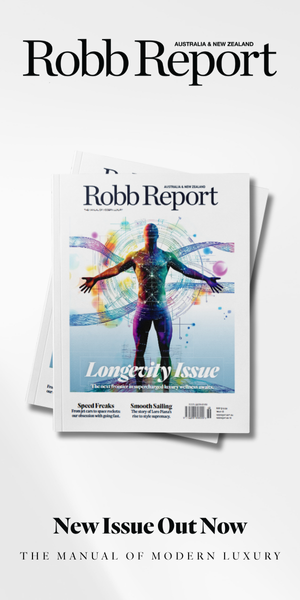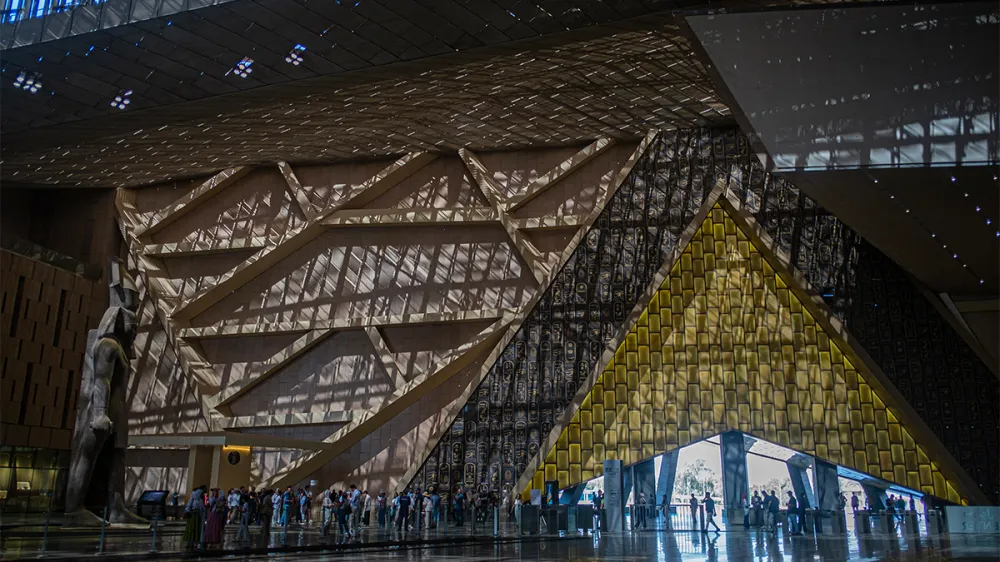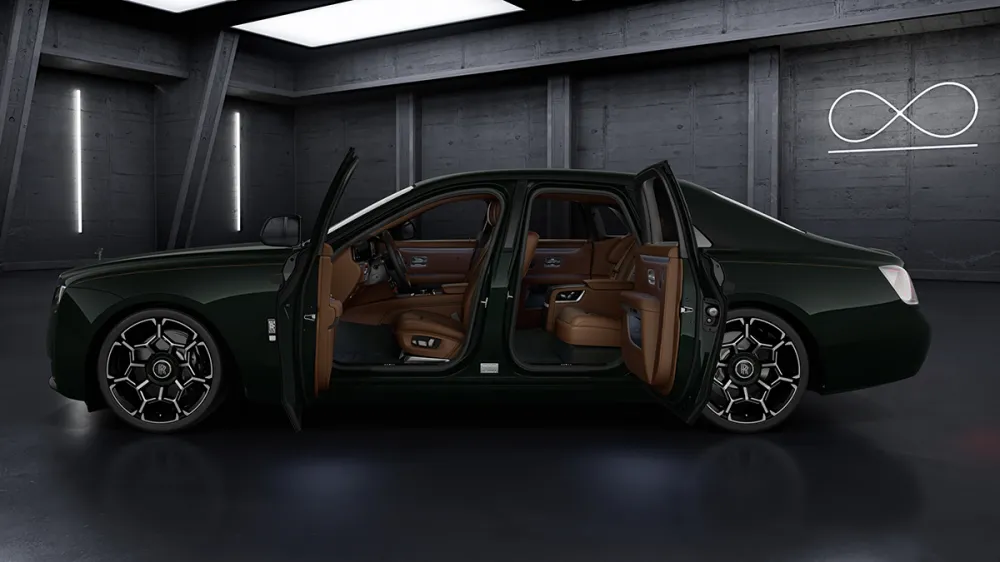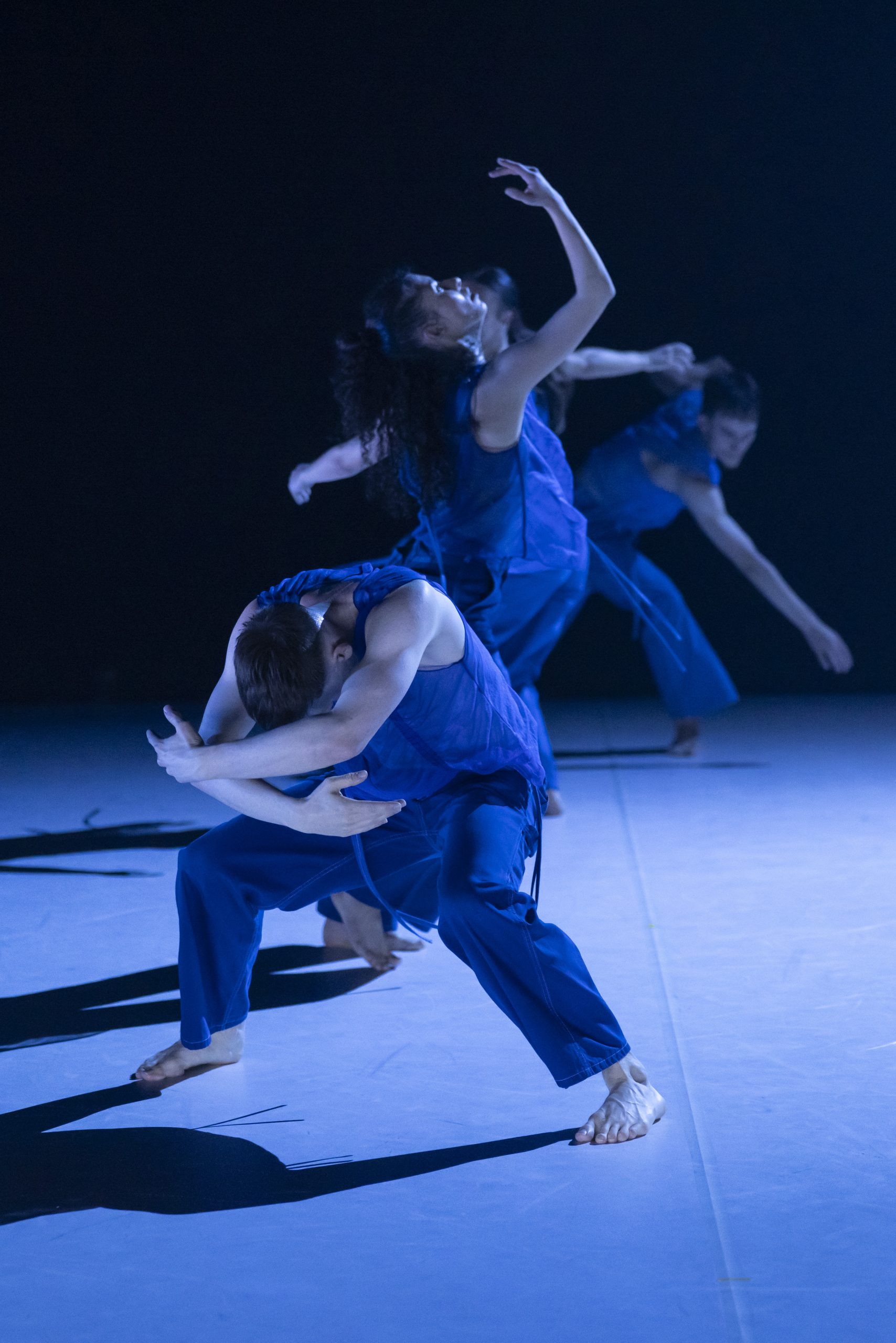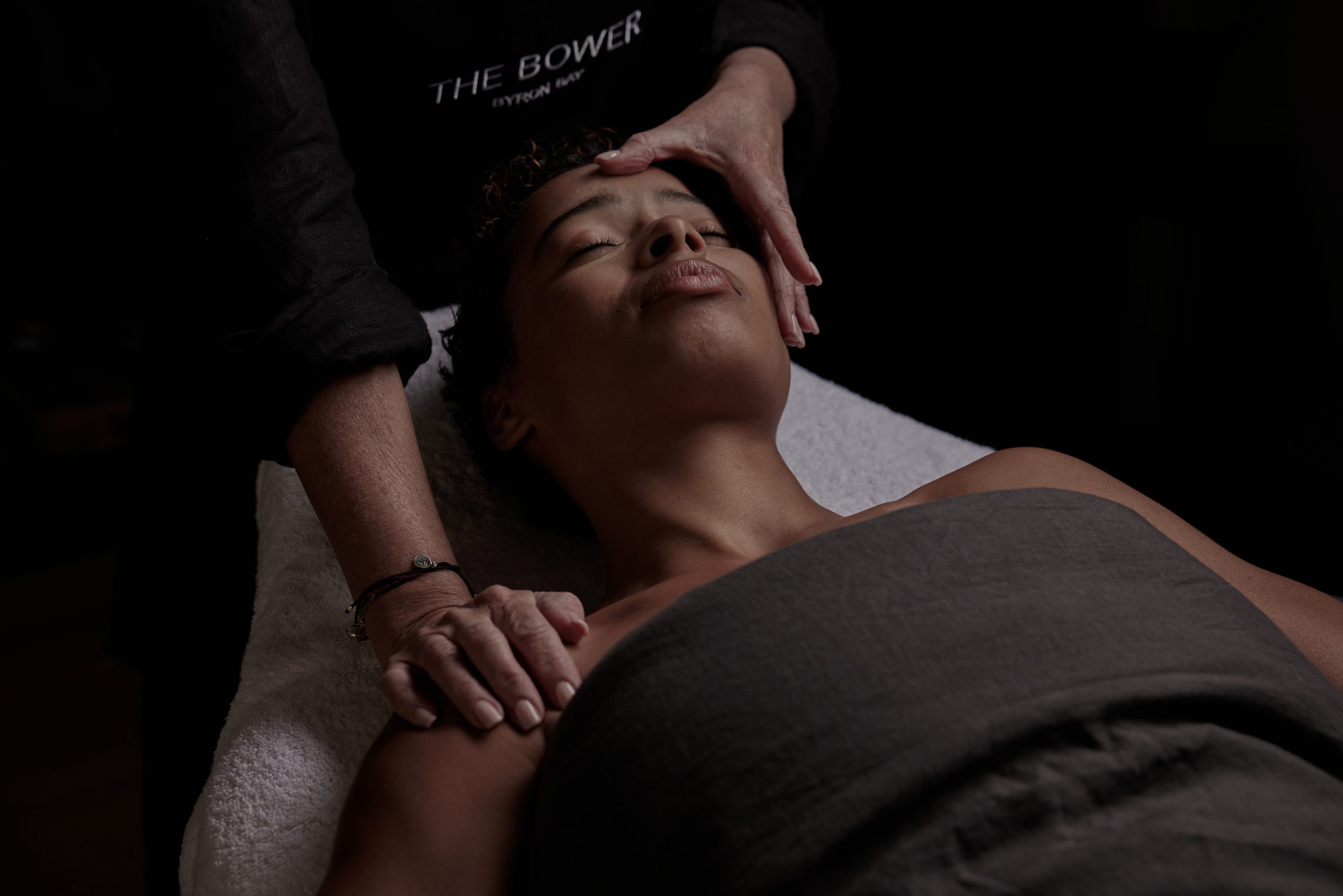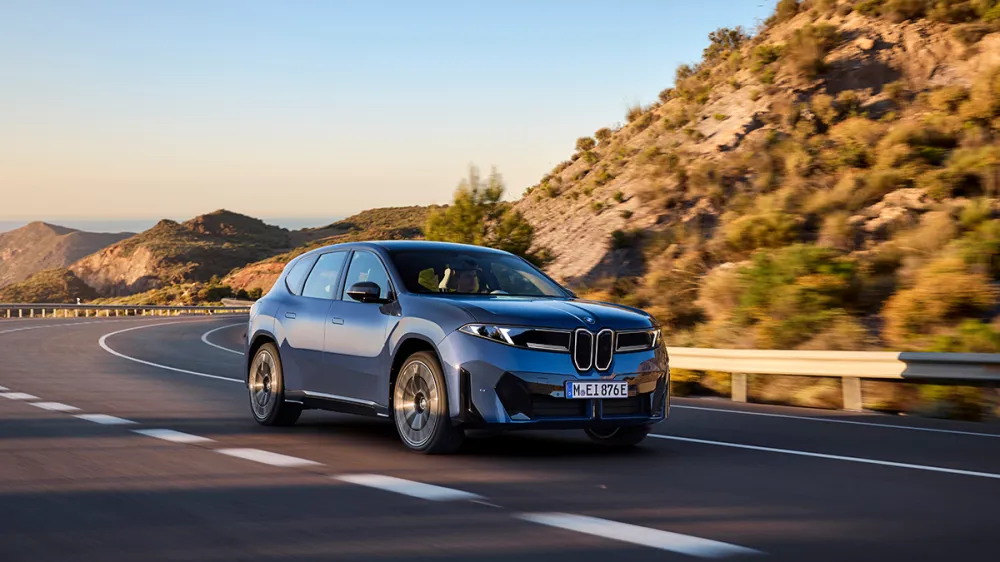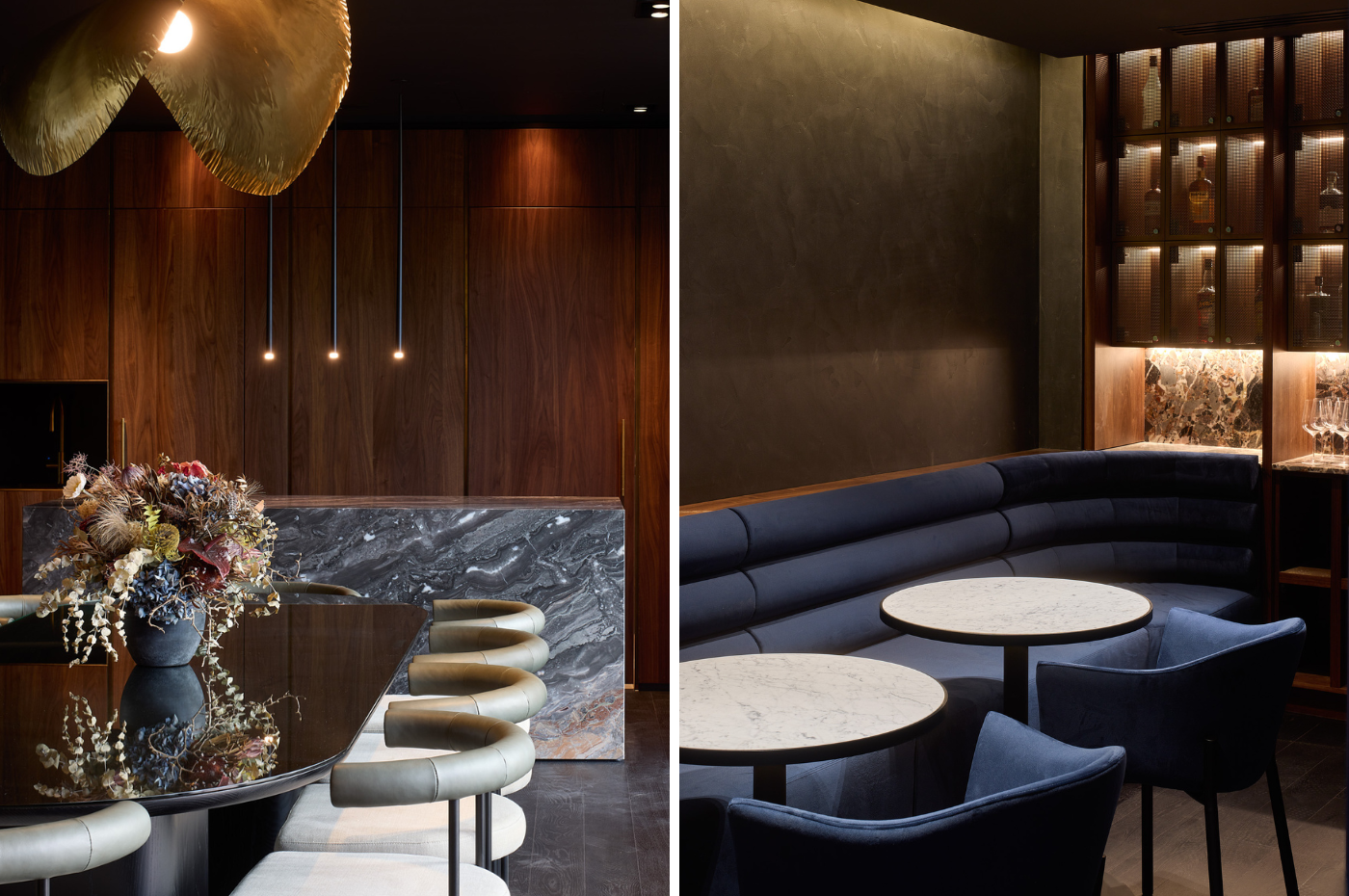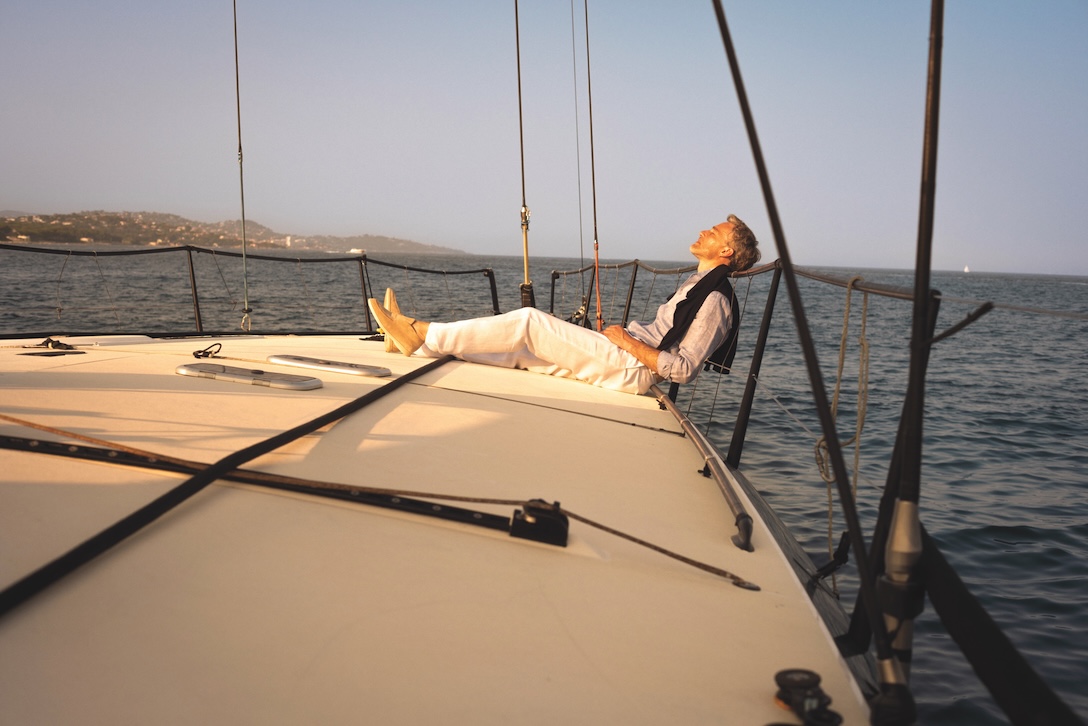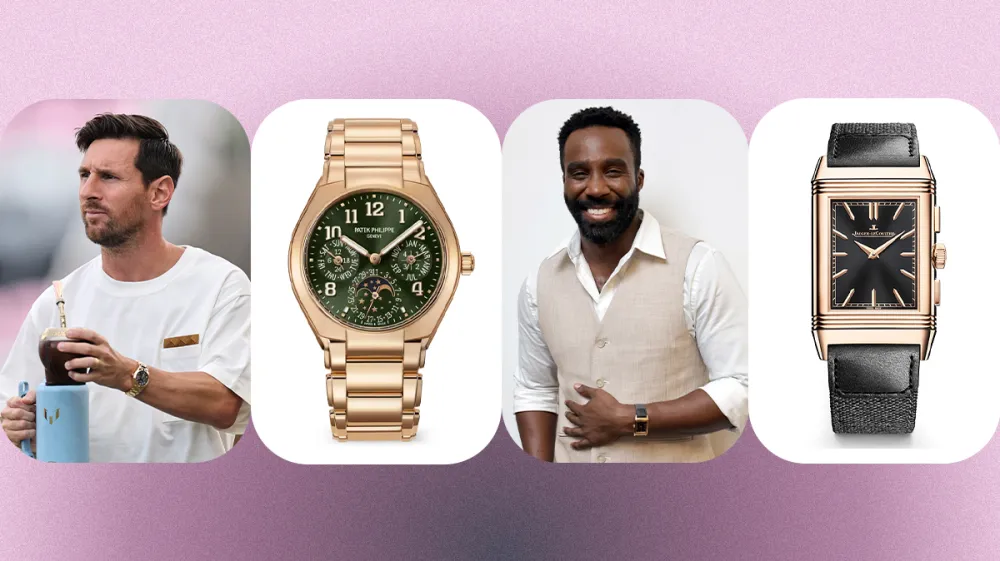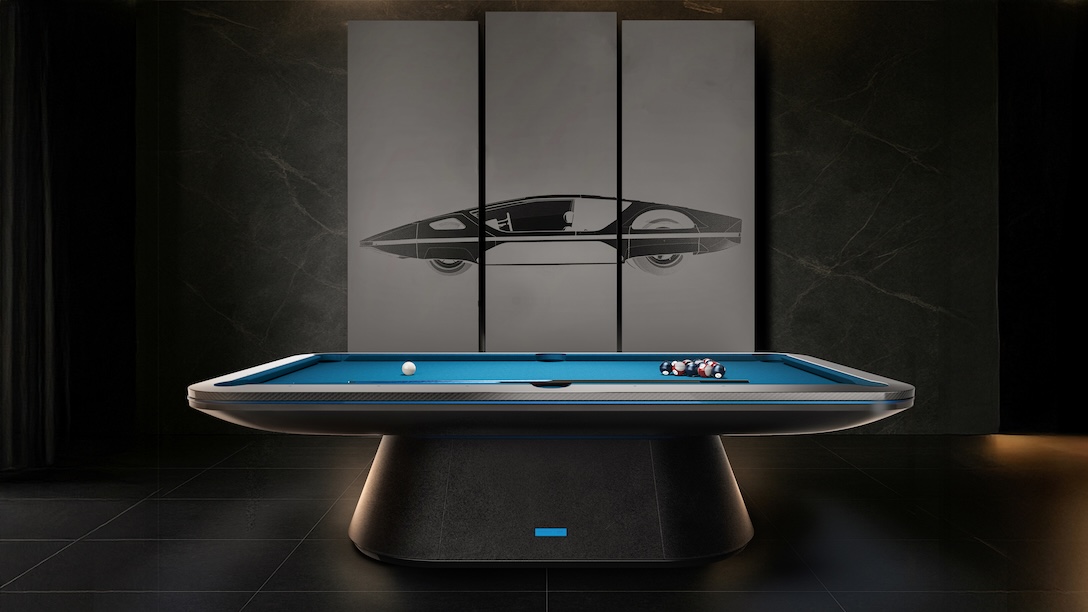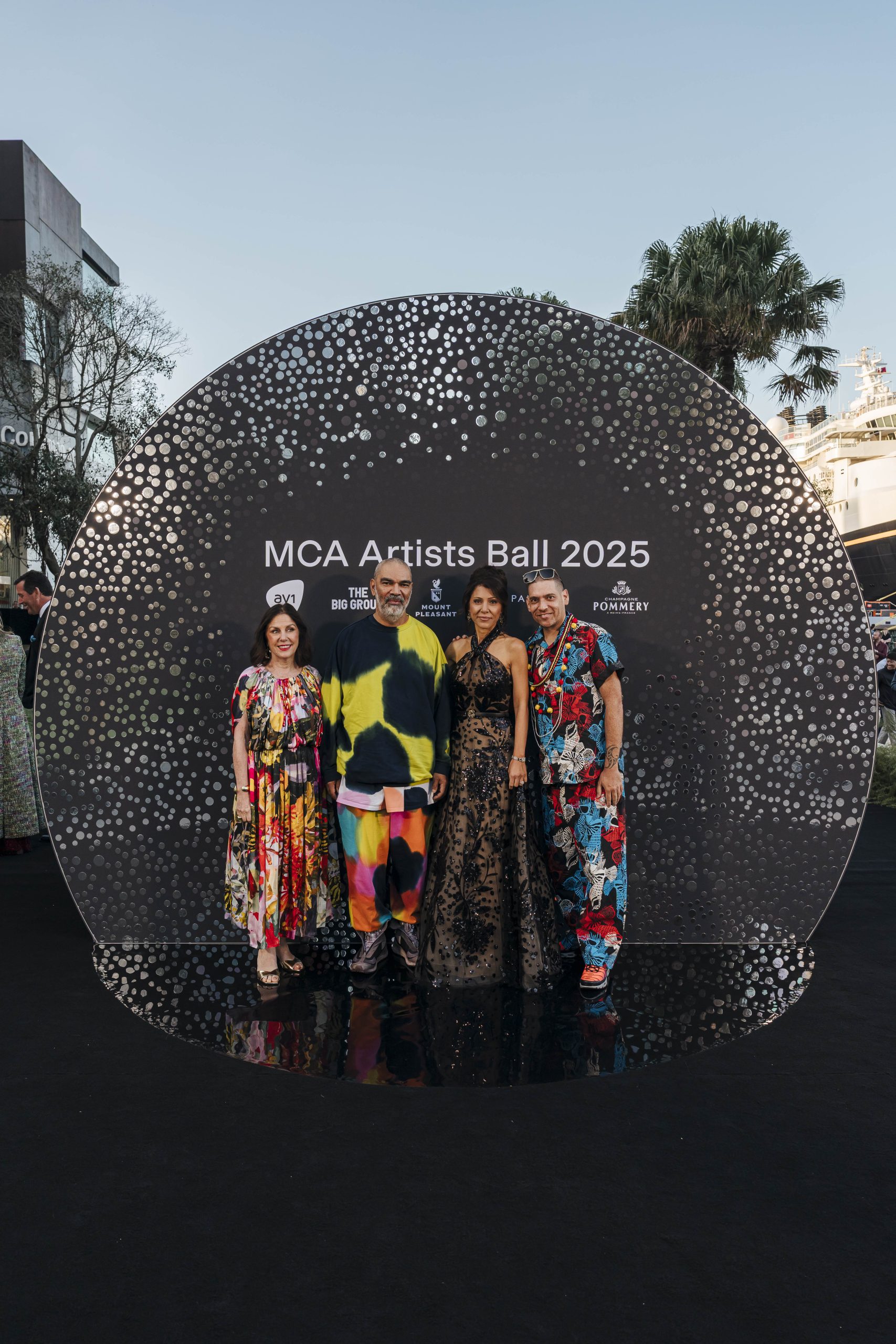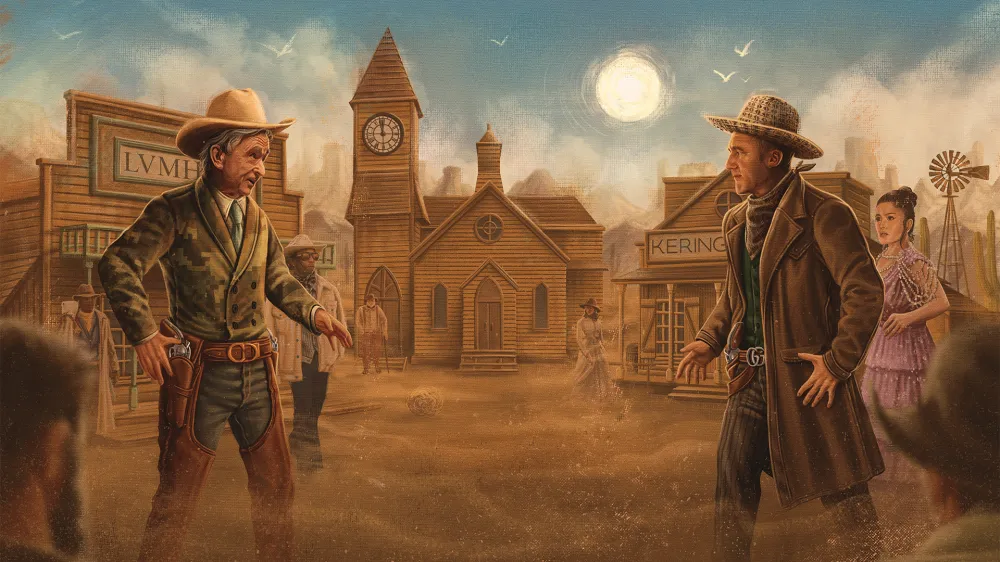
Hollywood’s French Duel
For rival billionaire moguls Bernard Arnault and François-Henri Pinault, it’s high noon in the battle to stake a claim in the movie business. Is Tinseltown big enough for both of them?
Related articles
Hollywood is famously awash in irony and blood feuds. So perhaps it’s fitting that, after locking horns for decades in Europe over Gucci, Hedi Slimane and the finest Champagnes, Bernard Arnault and François-Henri Pinault have exported their Gallic rivalry across the Atlantic, each billionaire now determined to conquer the epicentre of film and television just as he has vanquished the world of luxury.
The dueling titans are building foundations in Hollywood that could be transformative not only for their many brands, which are chockablock with unplumbed archives, but also for the entertainment business, which knows how to tell a compelling tale. Last September, Pinault, chairman and chief executive of Kering, bought a majority stake in the CAA talent agency for a reported US$2.8 billion (around $4.3 billion) through his family’s private-investment group, Artémis. Kering, a publicly traded company controlled by Pinault, was not directly involved, but the move raised speculation that its brands—which include Saint Laurent, Alexander McQueen, Gucci, Balenciaga and Boucheron—could benefit from entertainment relationships, particularly among celebrities, who remain the world’s most powerful influencers.
Months later, Arnault, chairman and chief executive of LVMH (also a public company), one-upped Pinault by launching an entirely new entertainment studio in partnership with well-connected Hollywood marketing veterans who, in case the move didn’t sting enough, once worked for CAA. Arnault named the studio 22 Montaigne Entertainment, after his company’s plush address in Paris’s 8th arrondissement, and placed his eldest son, Antoine, in charge.
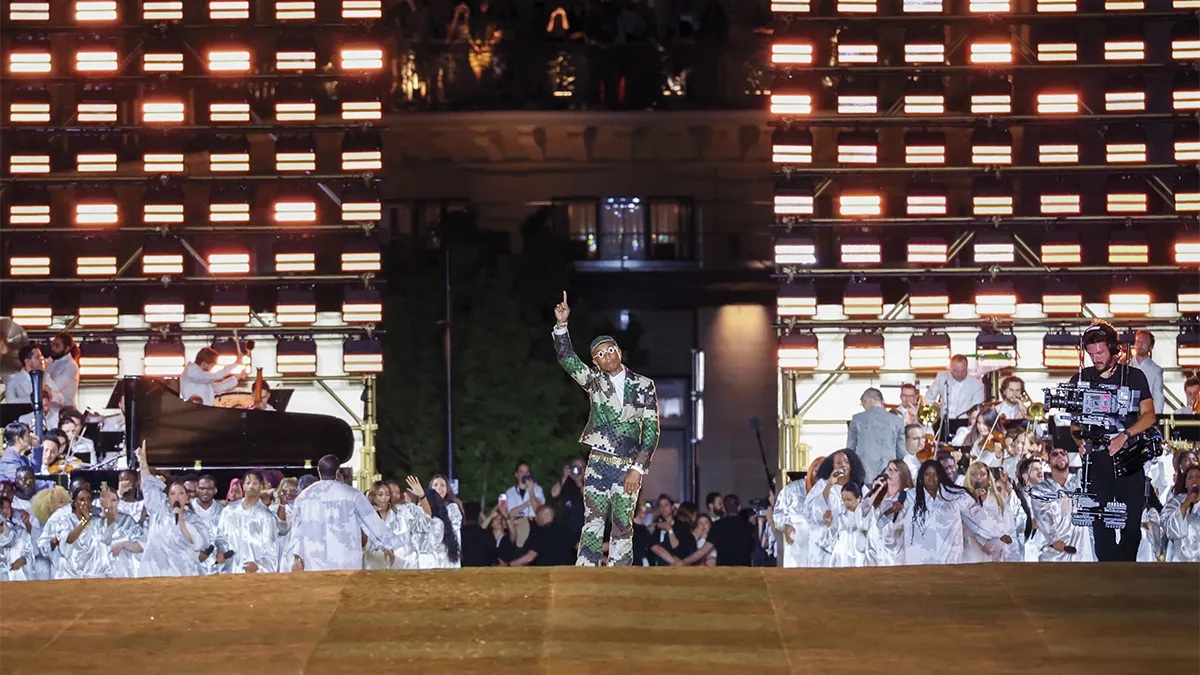
Fashion designer and musician Pharrell Williams walks the runway during the Louis Vuitton menswear show on Paris’s historic Pont Neuf last June.
Peter White/Getty Images
By the time its formation was announced in February, 22 Montaigne, via its new partners at Superconnector Studios, was reportedly already in talks with potential collaborators, such as Imagine Entertainment, founded by Ron Howard and Brian Grazer, and Reese Witherspoon’s Hello Sunshine. The latter, known for The Morning Show and Big Little Lies, focuses on stories about women, who happen to be LVMH’s primary consumers. Imagine the dramatic, not to mention comedic, tales buried in the vaults of a company that owns Louis
Vuitton, Christian Dior, Givenchy, Tiffany & Co. and Dom Pérignon, among dozens of other top names. The possibilities for brand-centric film, television, streaming and podcast projects that can bring their archives to life are practically endless.
What we’re seeing in real time is a collapsing of the traditional walls between entertainment and luxury—or, more bluntly, a disintegration of the space between storytelling and advertising. Fashion houses have long made nimble use of respected contemporary artists, enlisting them for merchandise collaborations in order to inject a dose of highbrow imprimatur into their wares. More recently, this fluidity has infiltrated the music industry: Pharrell Williams, the massively successful recording artist and producer, is not a trained fashion designer but last year was named creative director of Louis Vuitton menswear, where he’s churning out vibe-y videos, shutting down Paris streets with fashion shows, and racking up social-media engagement. Fashion is now aiming squarely for your screens.
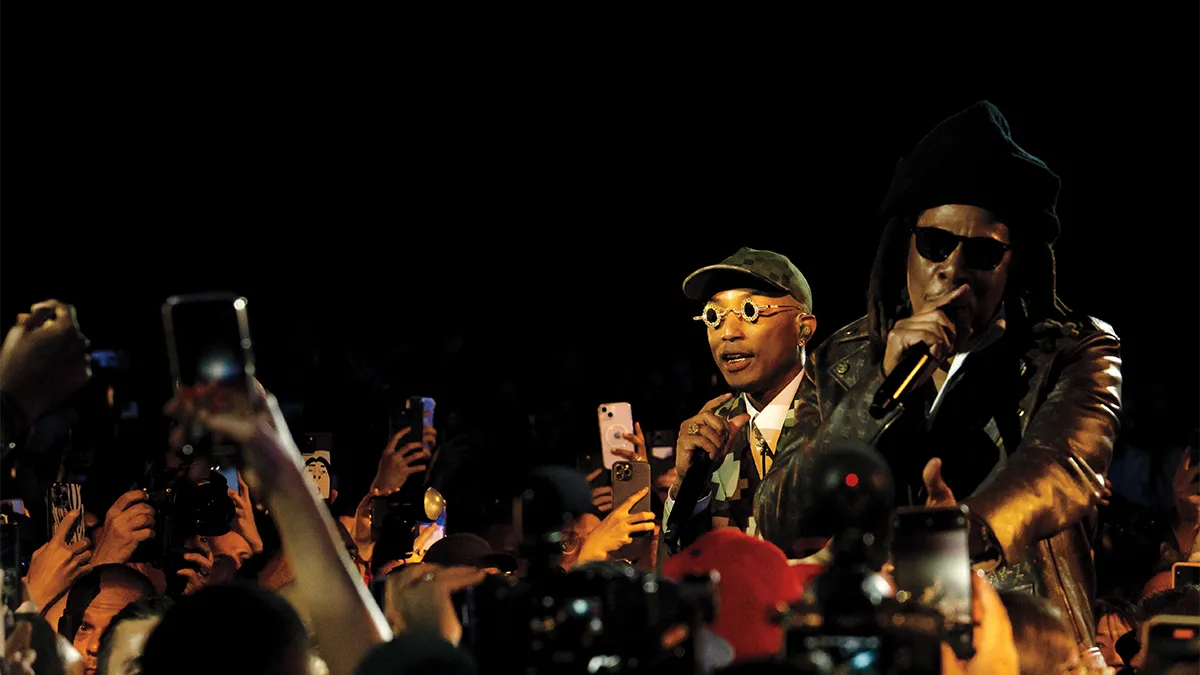
Adrienne Surprenant/Bloomberg/Getty Images
“The sectors of film and art and fashion have become so intertwined today that there’s no separation,” says Robert Burke, chairman of the consulting firm Robert Burke Associates, who counts several luxury giants among his clients.
In front of the camera, fashion and film have been cosy for decades, trading on celebrities’ fame for advertising campaigns and costuming deals.
Designers have always nurtured close liaisons with stars—think of the symbiotic relationship between Hubert de Givenchy and Audrey Hepburn, or the way Giorgio Armani burst into our collective consciousness (and wardrobes) by outfitting Richard Gere in American Gigolo. The occasional lucky release has also proved beneficial: the film adaptation of The Devil Wears Prada, the plot of which had next to nothing to do with the Italian maison, elevated it to household-name status in the 2000s, and a certain jeweller has been dining out on Breakfast at Tiffany’s for over six decades. “Still today, that movie and the image of Audrey Hepburn drive tremendous traffic to the Tiffany store,” Burke says.
Fashion-centric documentaries, from 1995’s Unzipped to Dior and I in 2014, have proved surprisingly appealing, and competition shows à la Project Runway oddly enduring. Now, top houses are recognising film and TV as more than publicity platforms: They see them as a means to expand the mass appetite for high fashion through entertainment, not just via fragrances and wallets.
One of the curiosities about Pinault’s and Arnault’s forays into Hollywood is how secretive they’ve both been about something so very public. (Both declined to comment for this article or to make any executive available for an on-the-record interview.) In fact, while it’s usually buyers who make announcements of this nature, a press release on the sale of the CAA stake was issued by the seller, TPG, which clearly wanted to trumpet the deal to its investors. Pinault was quoted in TPG’s release, noting that CAA would add “increased diversity, both in terms of geographical footprint and business activities” to Artémis’s $43 billion (around $66 billion) in assets. He has nevertheless declined every interview request. His longtime spokesman at Kering says that CAA is a private family-investment matter.
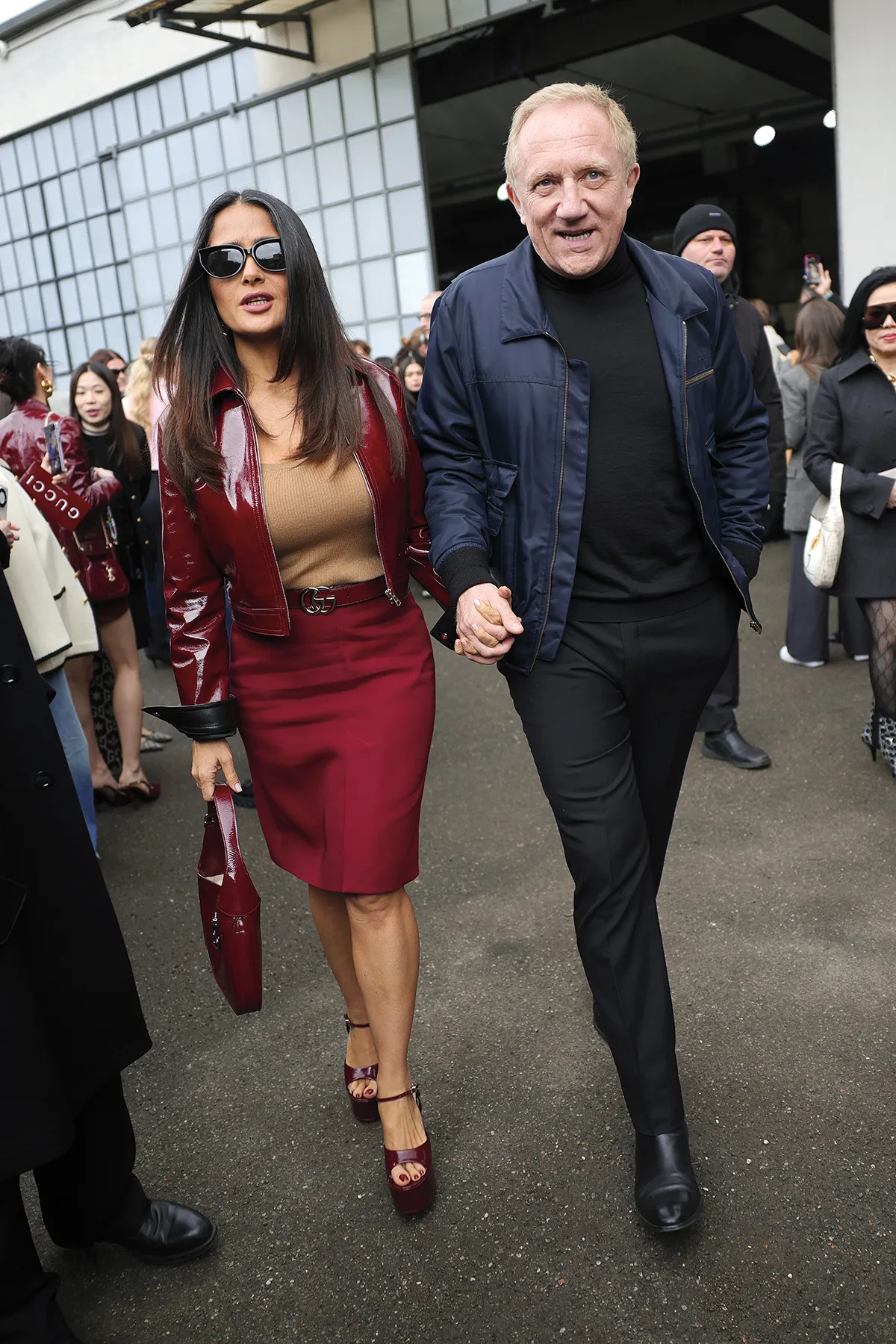
Week in February. Jacopo Raul/Getty Images.
LVMH made its own announcement about 22 Montaigne’s launch, sending out a three-page press release from Paris and serving up a few interviews in the business media with its North American chief executive, Anish Melwani, who will manage the operations of the studio along with Antoine Arnault, head of LVMH image and environment. Melwani’s interviews appear to have been seen within the company as a rare misstep. When the news made global headlines—from the Financial Times to Fortune to Fast Company—LVMH and its partners at Superconnector Studios retreated, halting all interviews. “It took them by surprise that this got the amount of attention it got,” a person close to LVMH tells Robb Report, calling the coverage “overblown”.
Arnault and Pinault are not pioneering the alignment between Hollywood and consumer brands. Nike’s Waffle Iron Entertainment, launched in 2021, already has a first-look deal with Apple TV+ and produced The Day Sports Stood Still for HBO, as well as Apple TV’s Ja Morant docuseries Promiseland, merging sports-oriented content with Nike’s athletic products. In fact, one of 22 Montaigne’s partners at Superconnector, a Hollywood marketer named Jae Goodman, helped create Waffle Iron Entertainment. And last year, Authentic Brands, which owns the intellectual property for dozens of marques, from Barneys New York to Elvis Presley to David Beckham, launched Authentic Studios to build films, television shows and other entertainment around its brands.

CAA headquarters in L.A.
CAA headquarters in L.A.
AaronP/Bauer-Griffin/GC Images
The approaches taken by the two Frenchmen—the mirthful François-Henri Pinault, known by friends as FHP, and the meticulous Bernard Arnault, affectionately called Monsieur Arnault—reflect how they run their respective corporate empires. In some ways they’re mirror images, each building businesses from luxury goods and related playthings of the rich and famous. Their private family offices even neighbour each other across a quiet plaza in Paris not far from the Grand Palais, with Arnault’s Financière Agache located at 11 rue François Premier, and Financière Pinault just down the rue at number 12.
LVMH dwarfs Kering by many measures. Its 75 brands are deep with heritage, often centuries old, and generated revenues of over $93 billion (around $143 billion) in 2023, while Kering’s dozen or so are younger and produced over $21 billion (around $32 billion) in revenues last year. The conglomerates have been fierce rivals for decades, competing with each other not only for retail sales but also for companies and talent. Their struggle for control of Gucci in the late 1990s, when Tom Ford was arguably the most influential designer on the scene (and Pinault’s father, François, faced off against Arnault), was epic, and top names have often bounced between the two camps, most notably Hedi Slimane, who jumped from LVMH (Dior Homme) to Kering (YSL) and back (Celine). Taking notes, screenwriters?
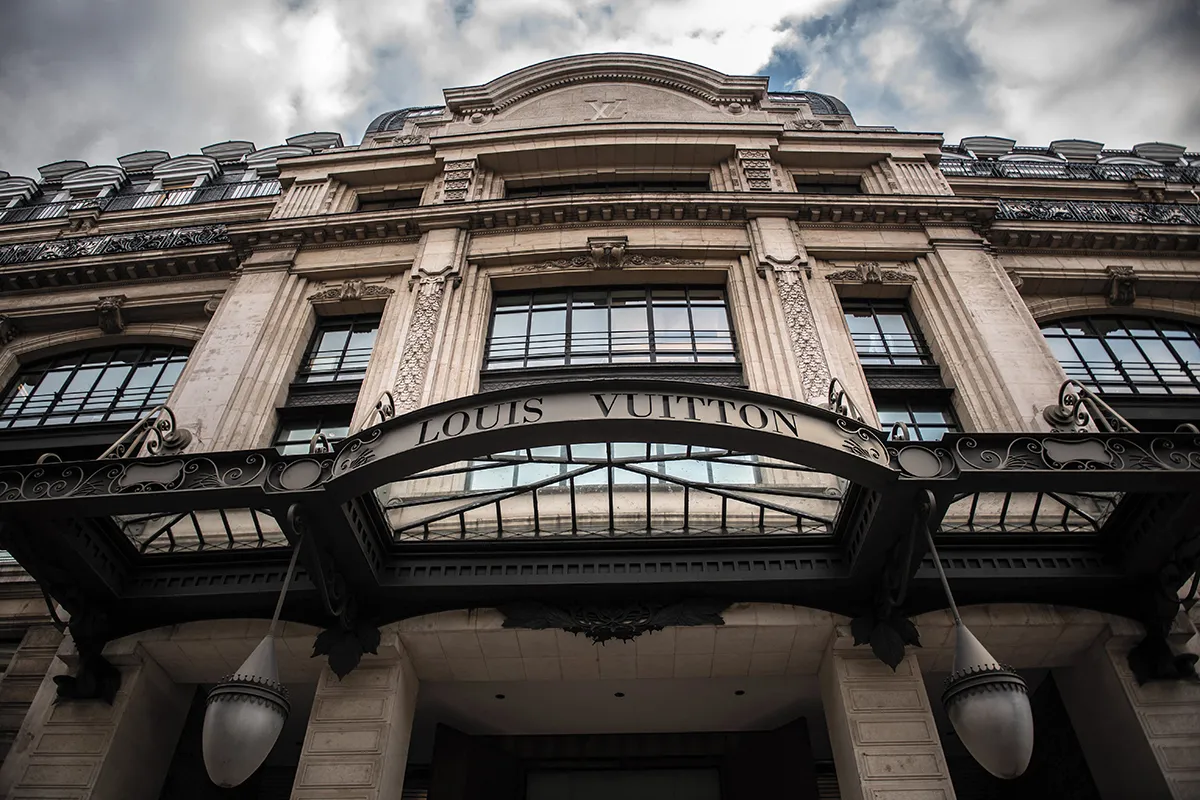
Martin Bureau/AFP/Getty Images
While Arnault is an efficient planner who keeps things centrally organised—opening a Hollywood studio to serve all of LVMH fits his profile perfectly—Pinault can be more capricious and prefers to leave details up to brands and their managers. Arnault’s Hollywood manoeuvring appears coolly calculated, while Pinault’s multibillion-dollar investment for 56 percent of CAA has proved something of a head-scratcher to observers from both industries. “If you would have asked me who would come along to acquire CAA, it certainly wouldn’t have been a company that was rooted in fashion and luxury,” says Keith Baptista, cofounder of Prodject, which forged early connections between fashion and entertainment with shows such as Rihanna’s Savage x Fenty special on Prime Video.
Still, in an age when celebrities are the most valuable influencers (think Anya Taylor-Joy’s gushy Instagram post thanking Dior, Tiffany and Jaeger-LeCoultre for her Oscars ensemble in March, which has garnered 2.8 million likes from her 10.6 million followers as of press time, or Taylor Swift’s 284 million Instagram followers, which make her a one-woman media empire) and when creative direction is more about cultural access than apparel design, Pinault now has one of the most potent contact lists on the planet.
CAA represents thousands of actors, directors, models, musical artists, athletes, coaches and other stars. Its agents are some of the world’s most adroit dealmakers. The firm, whose stone-and-glass headquarters looms over Century City, California, boasts that it pioneered talent agencies’ incursions into the sports business, investment banking, venture funds and brand-marketing services, not to mention developing a business arm in China, which is every luxury executive’s fervent dream market.
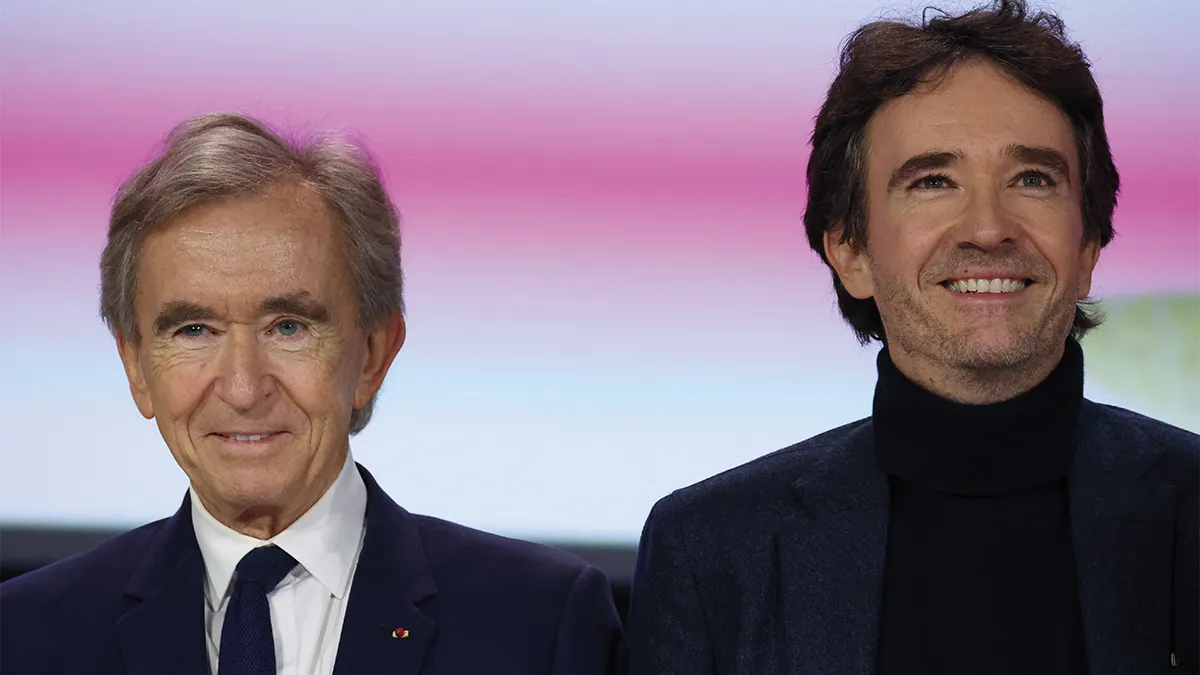
Emmanuel Dunand/AFP/Getty Images
Hollywood observers suggest the real winners of the deal are the co-chairmen of CAA—Bryan Lourd, Richard Lovett, and Kevin Huvane—who have an opportunity to unload part of their own stakes for as much as $200 million (around $310 million), according to a Financial Times report last September. Then there’s former majority owner TPG, the financial-services firm that sold its shares to Artémis. TPG, which first bought a piece of CAA in 2010, had been looking to cash out of the long-held investment and realise its gains without having to invest more in the agency’s future growth. Few clear options emerged until Pinault happened along.
“Do I think it’s good for Richard, Kevin and the management team? Yes,” says an executive at a rival agency, who suggests that CAA is a trophy acquisition for the Pinaults. In addition to the family’s stake in Kering, CAA will sit alongside a billionaire’s playground of other assets: Christie’s auction house, Artémis Domaines estates, French soccer team Stade Rennais FC, several media and tech investments that include a stake in TikTok-owner ByteDance, and a substantial private art collection.
This executive questions, however, whether the family is prepared to invest the additional money required to expand CAA as its rivals, including United Talent Agency and William Morris Endeavor, push into new fields, and as revenue streams morph. “Do I think it’s good for CAA in the long run? No.”

Barry King/Alamy
But from CAA’s perspective, according to an insider there, Pinault represents a smart, hands-off owner much like TPG was, and not just a private-equity investor with a short-term outlook. It’s expected that board seats will be taken by either Pinault or his Artémis deputy chief executives, Héloïse Temple-Boyer, who sits on Kering’s board, and Alban Gréget.
“We’re not part of his company. We’re just another investment,” this insider says of Pinault. “He knows what he knows. He knows what he doesn’t know. He lets people manage. TPG was the same way.”
But CAA also apparently believes that Pinault has something to offer the agency other than cash. “He has a familiarity in businesses driven by talent. That’s something that he has that normal private equity doesn’t,” the insider says. “We’re just at the beginning stages of figuring out what those opportunities are.”
Adding to the trophy speculation is the presence of Pinault’s wife, the 57-year-old Oscar-nominated actress Salma Hayek, the mother of his youngest child. (Another of his four children is just a year older and is the son of supermodel Linda Evangelista.) Pinault, who is 61, is often photographed standing behind Hayek, unidentified by paparazzi but holding her coat and bag while she signs autographs.
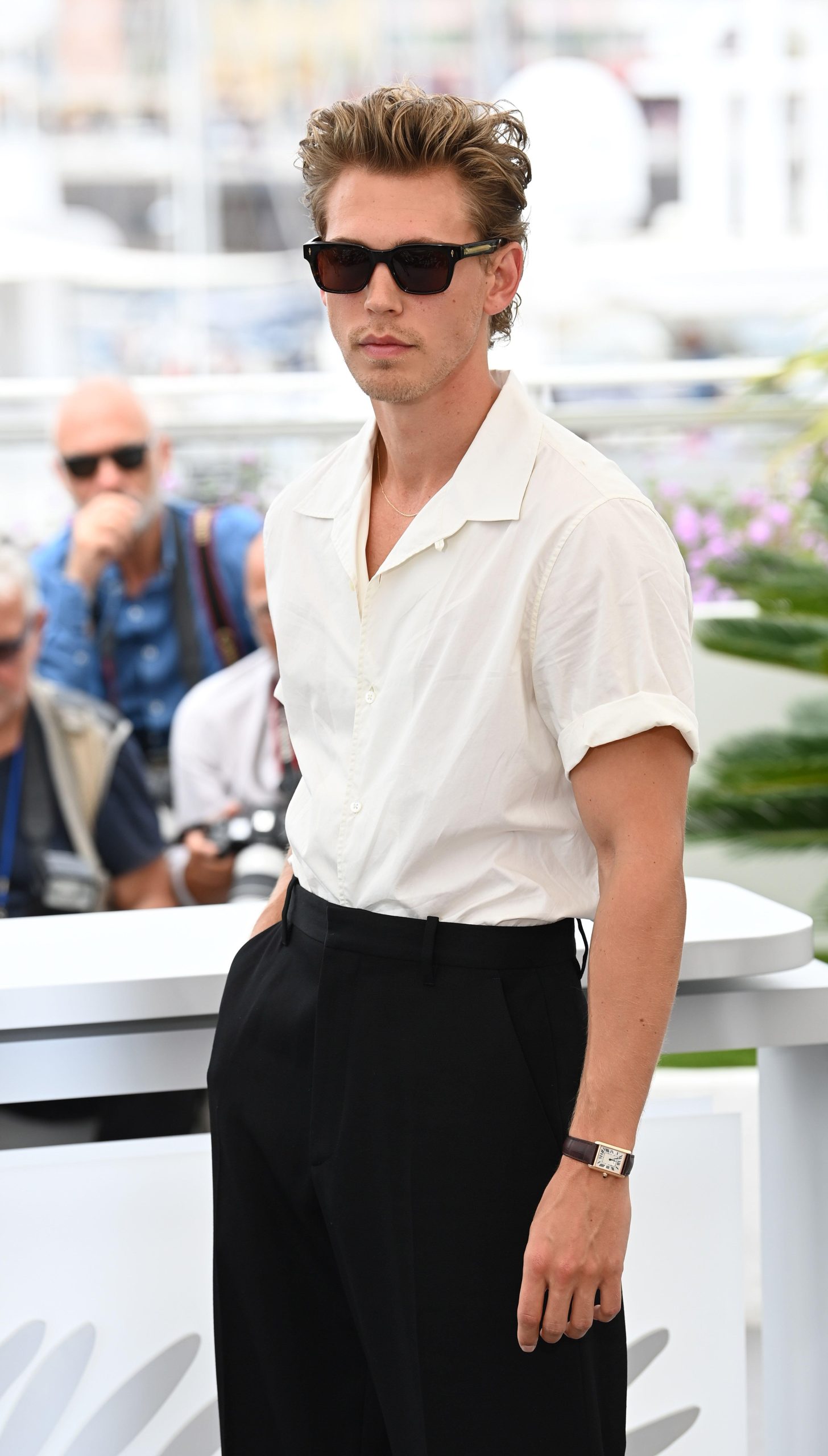
Hayek is represented by CAA, which now answers to her husband. A person who has worked under Pinault for years notes that the actress is close with several of CAA’s principals. “If you want my opinion,” they say, “I think the whole thing is kind of strange. I think it’s Salma-inspired.”
Several Hollywood executives, none of whom would speak on the record, challenged initial speculation that Pinault’s control of CAA will help Kering recruit talent to wear or advertise its labels. Proposing such alliances might instead raise suspicions that they are more for the benefit of Kering and CAA corporately.
“You can’t just jam people in. The agents are going to ask for the richest deal,” says another agency rival, who cites the fiduciary responsibility that agents have for their clients’ best interests. What’s more, the rival adds, “The people who run fashion houses don’t give a shit about the corporate synergies. You can’t tell them they have to use Tom Cruise.”
Like LVMH, Kering is also backing at least one filmmaking venture in support of its brands’ entertainment ambitions. Saint Laurent made a splash at Cannes last year, not just on the red car- pet but also by producing a short cowboy movie by acclaimed Spanish director Pedro Almodóvar, starring Ethan Hawke and Pedro Pascal, called Strange Way of Life.
The title is the first from Saint Laurent Productions, a film-production company the label launched last year, led by its creative director, Anthony Vaccarello. The designer has more projects in the works by Oscar-winning director Paolo Sorrentino and heavyweights David Cronenberg, Abel Ferrara, Wong Kar-wai, Jim Jarmusch and Gaspar Noé.
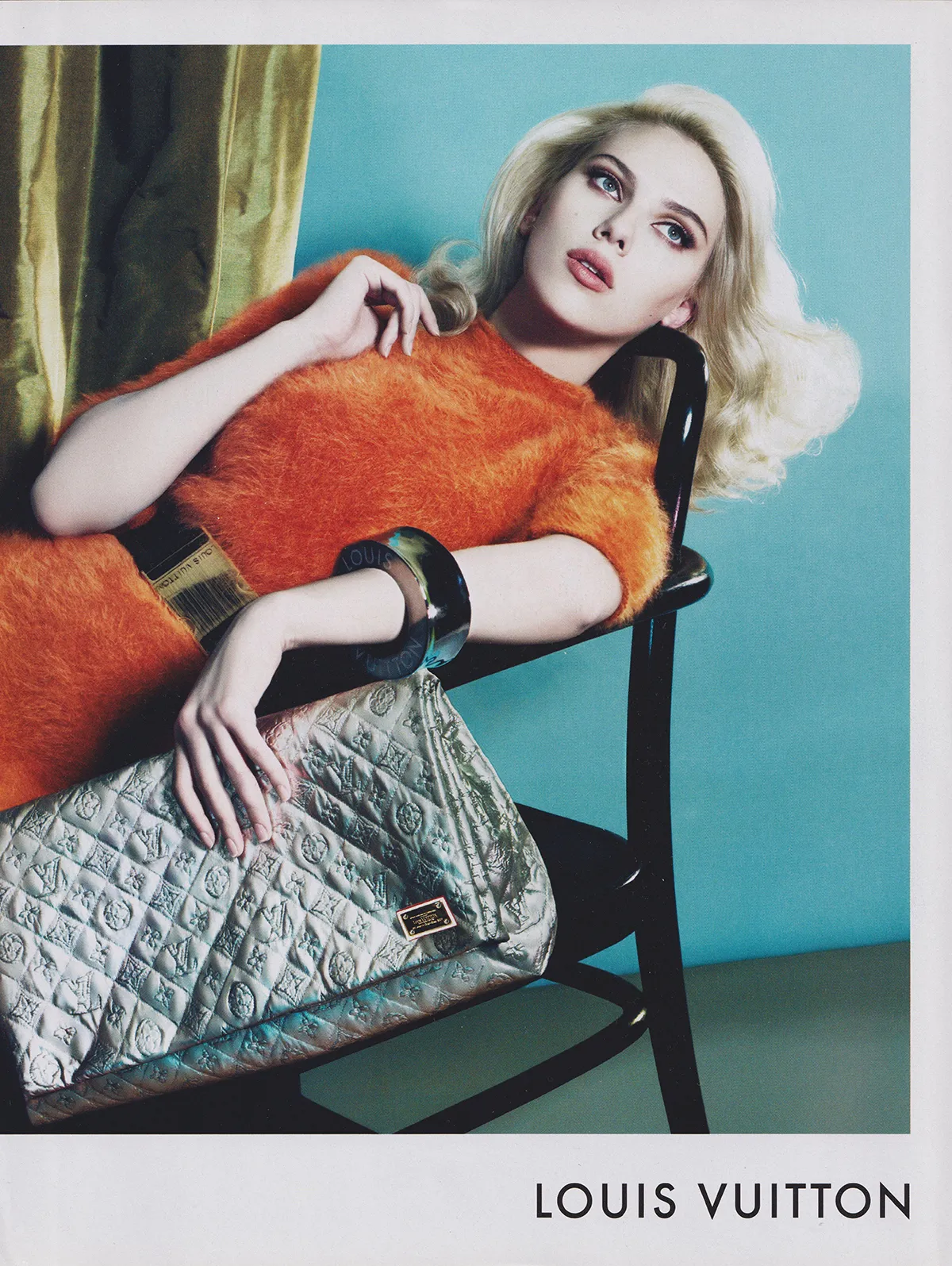
Vaccarello designed the costumes for Strange Way of Life, so it’s a safe bet that he’ll do the same for future films. People close to the label say the venture began because Vaccarello, a film lover, pressed for the new creative outlet. (He’s not the first designer to catch the movie bug: Tom Ford directed two acclaimed—and, naturally, stylish—features before selling his eponymous brand to Estée Lauder last year; he now focuses full-time on moviemaking.) At the Saint Laurent Productions launch in April 2023, Vaccarello told Variety that filmmaking gives him “the opportunity to expand the vision I have for Saint Laurent through a medium that has more permanence than clothes”.
“You can still see a film in 10 or 30 years, if it’s good,” the designer said. “In some ways, making a film can be more impactful than a seasonal collection. For me it’s a natural extension to another field of creativity that perhaps is more general and popular.”
One more thing promises to be new and fascinatingly strange about these luxury conglomerates’ invasion of the Hollywood jungle: their investments will certainly make odd bedfellows, albeit indirectly, of Pinault and Arnault.
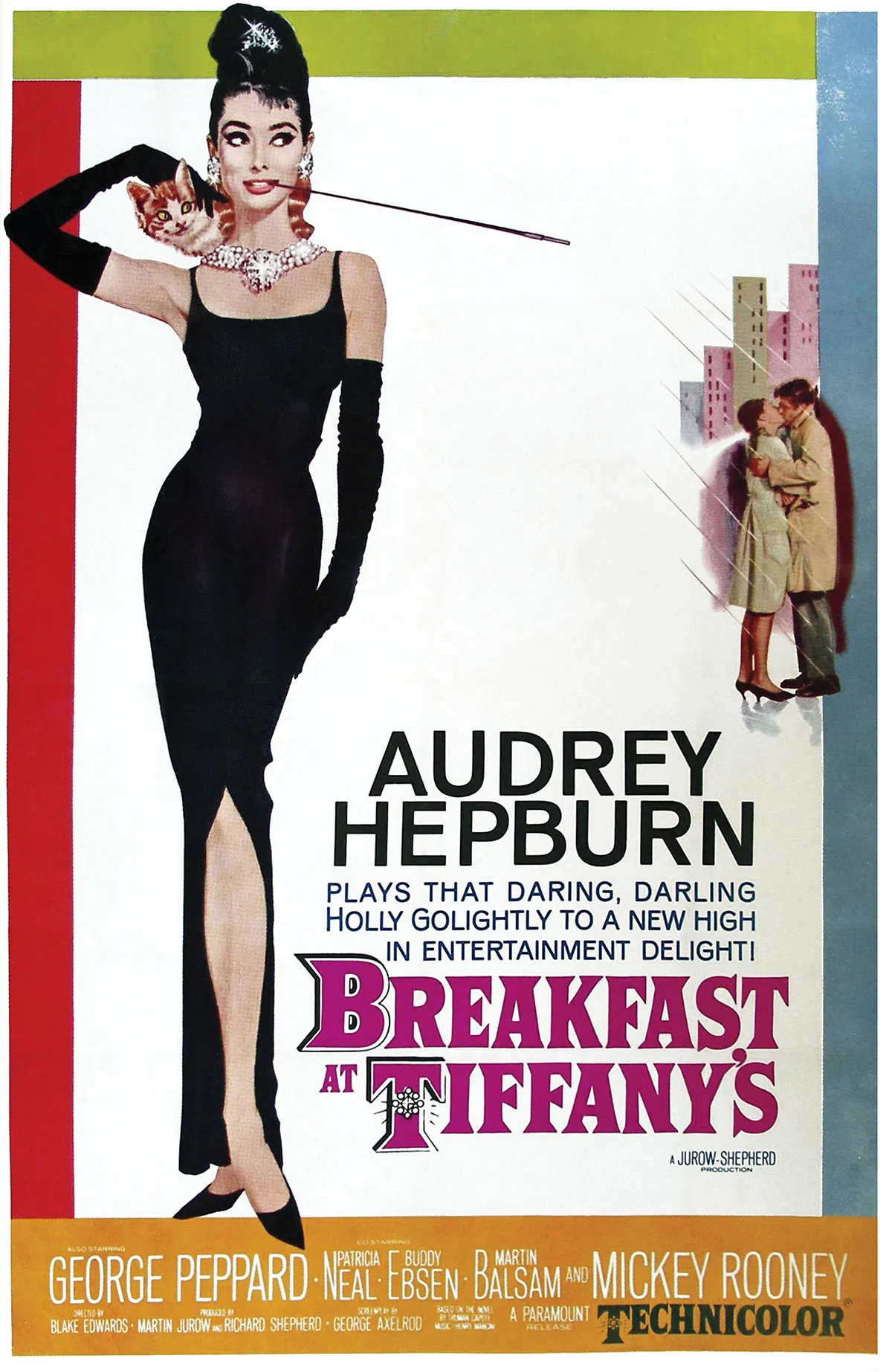
Alamy
There is every likelihood that Arnault’s 22 Montaigne will soon be dealmaking with Pinault’s CAA to lock in directors, writers and stars. Scarlett Johansson is both a CAA client and a Louis Vuitton brand ambassador. Natalie Portman, also repped by CAA, is a leading face for Arnault’s pet label, Dior, which is the first luxury house he bought when building LVMH.
Such crossovers aren’t unusual in Hollywood, where individuals are accustomed to working for rival studios or networks. Unheard of, though, is Arnault’s paying Pinault, via CAA, for the privilege—and here’s our elevator pitch—of signing Ryan Gosling to a Netflix drama, directed by Steven Spielberg, that tells the story of a 17th-century Benedictine monk who perfected the making of Champagne. Dom Pérignon: the Movie, coming soon?
Illustration by SAM GREEN
Subscribe to the Newsletter
Recommended for you
Double-Vision
What happens when Australia’s most compelling artists turn their gaze on each other? The answer is Artists by Artists, a striking new book from Arts-Matter founders Michelle Grey and Susan Armstrong.
October 27, 2025
My Hong Kong
As the buzz around the East Asian cultural mecca amplifies, who better than two savvy, on-the-ground locals to curate an insider’s guide to the city’s essential experiences.
October 27, 2025
You may also like.
You may also like.
Radek Sali’s Wellspring of Youth
The wellness entrepreneur on why longevity isn’t a luxury—yet—and how the science of living well became Australia’s next great export.
Australian wellness pioneer Radek Sali is bringing his bold vision for longevity and human performance to the Gold Coast this weekend with Wanderlust Wellspring—a two-day summit running 25-26 October 2025 at the RACV Royal Pines Resort in Benowa. Sali, former CEO of Swisse and now co-founder of the event and investment firm Light Warrior, has long been at the intersection of wellness, business and conscious purpose.
Wellspring promises a packed agenda of global thought leaders in biohacking and longevity, including Sydney-born Harvard researcher David Sinclair, resilience pioneer Wim Hof, performance innovator Dave Asprey and muscle-health expert Gabrielle Lyon. From immersive workshops to diagnostics, tech showcases, and movement classes, Sali aims to make longevity less a niche pursuit for the elite and more an accessible cultural shift for all. Robb Report ANZ recently interviewed him for our Longevity feature. Here is an edited version of the conversation.
You’ve helped bring Wellspring to life at a moment when longevity seems to be dominating the cultural conversation. What drew you personally to this space?
I’ve always been passionate about wellness, and the language and refinement around how we achieve it are improving every day. Twenty years ago, when I was CEO of Swisse, a conference like this wouldn’t have had traction. Today, people’s interest in health and their thirst for knowledge continue to expand. What excites me is that wellness has moved into the realm of entertainment—people want to feel better, and that’s something I’ve always been happy to deliver.
There are wellness retreats, biohacking clinics, medical conferences everywhere. What makes Wellspring different?
Accessibility. A wellness retreat can be exclusive, but Wellspring democratises the experience. Tickets start at just $79, with options up to $1,800 for a platinum weekend pass. That means anyone can learn from the latest thought leaders. Too often in this space, barriers are put up that limit who can benefit from the science of biohacking. We want Wellspring to be for everyone.
You’re not just an organiser, but also an investor and participant in this field. How do you reconcile passion with commercial opportunity?
Any investment I make has to have purpose. Helping people optimise their health has driven me for two decades. It’s satisfying not just as an investor but as an operator—it builds wonderful culture within organisations and makes a real difference to people’s lives. That’s the natural fit for me, and something I want to keep refining.
What signals do you look for in longevity ventures to separate lasting impact from passing fads?
A lot of what we’re seeing now are actually old ideas resurfacing, supported by deeper scientific research. My father was one of the first in conventional medicine to talk about diet causing disease and meditation supporting mental health back in the 1970s. He was dismissed at first, but decades later, his work was validated. That experience taught me to look for evidence-based practices that endure. Today, we’re at a point where great scientists and doctors can headline events like Wellspring—that’s a huge cultural shift.
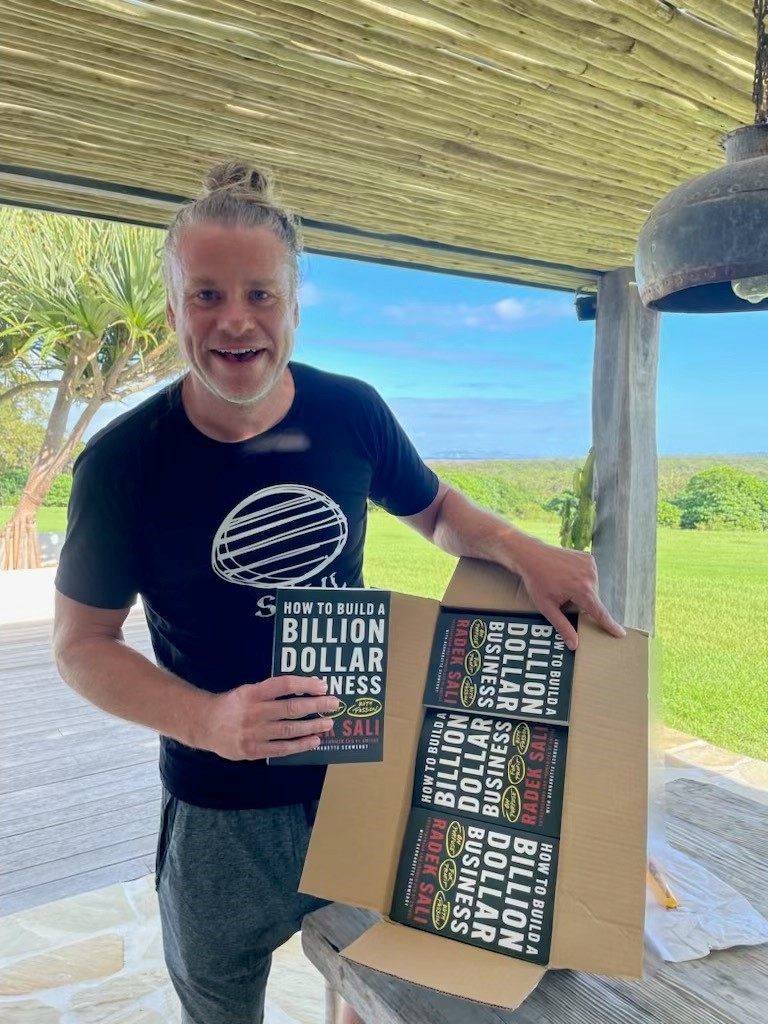
Longevity now carries a certain cultural cachet—its own insider language and status markers. How important is that to moving the field forward?
Health is our most precious asset, and people have always boasted about their routines—whether it’s going to the gym, doing a detox, or training for a marathon. What’s different now is that longevity practices are gaining mainstream recognition. I see it as something to be proud of, and I want to democratise access so everyone can ride the biohacking wave.
But some argue that for the ultra-wealthy, peak health has become a kind of luxury asset—like a private jet or a competitive edge.
That’s short-sighted. Yes, there are extremes, but most biohacking methods are accessible and inexpensive. Look at the blue zones—their lifestyle practices aren’t costly, yet they lead to long, healthy lives. That’s essential knowledge we should be sharing widely, and Wellspring is designed to do that in an engaging way.
Community is often cited as a key factor in healthspan. How does Wellspring foster that?
Community is at the heart of it. Just as Okinawa thrives on social connection, we want Wellspring to be a regular gathering place where people uplift each other. Ideally, it would become as busy as a Live Nation schedule—but for health and wellness.
Do you worry longevity could deepen class divides?
Class divides exist, and health isn’t immune. But in Australia, we’re fortunate—democracy and a strong equalisation process help maintain quality of life for most. Proactive healthcare, like supplementation and lifestyle changes, isn’t expensive. In fact, it’s cheaper than a daily coffee. That’s why we’re one of the top five longest-living nations. The opportunity is to keep improving by making proactive health accessible to everyone.
Some longevity ventures are described as “hedge-fund moonshots.” Others, like Wellspring, seem grounded in time-tested approaches. Where do you stand?
There’s value in both, but I’m more interested in sensible, sustainable practices. Things like exercise, meditation, and community-driven activities are proven to extend life and improve wellbeing. Technology can support this, but we can’t lose sight of the human elements—connection, balance, and purpose.
Finally, what role can Australia—and Wellspring—play in shaping the global longevity conversation?
The fact that we can put on an event like Wellspring, attract world-leading talent, and already have commitments for future years says a lot. Australia is far away, but that hasn’t stopped great scientists and thinkers from coming. We’ll be here every year, contributing to the global conversation and, hopefully, helping more people extend their healthspan.
You may also like.
‘Continuum’ Opens to Rave Applause at Sydney Dance Company
Rafael Bonachela’s latest curatorial triumph premiered last night at the Roslyn Packer Theatre, dazzling audiences with its emotional range and fearless physicality.
Sydney Dance Company opened its latest season with Continuum, a triple bill that reminds audiences why the ensemble remains Australia’s most compelling cultural export. Receiving a standing ovation at its premiere last night at the Roslyn Packer Theatre, the program unfolds as an elegant meditation on movement and metamorphosis—three distinct choreographic visions held together by Rafael Bonachela’s curatorial precision and instinct for contrast.
Stephen Page’s Unungkati Yantatja – one with the other breathes land, sea, and sky into motion; Tra Mi Dinh’s Somewhere between ten and fourteen lingers in the tender light between day and night; and Bonachela’s own world-premiere Spell delivers the evening’s visceral heartbeat. Together they trace the continuum of life itself—fluid, volatile, and impossible to pin down. Running through 1 November, the production affirms Bonachela’s vision of dance as “an ever-evolving conversation between artists, audiences, and the world around them.” Robb Report ANZ recently caught up with Bonachela.
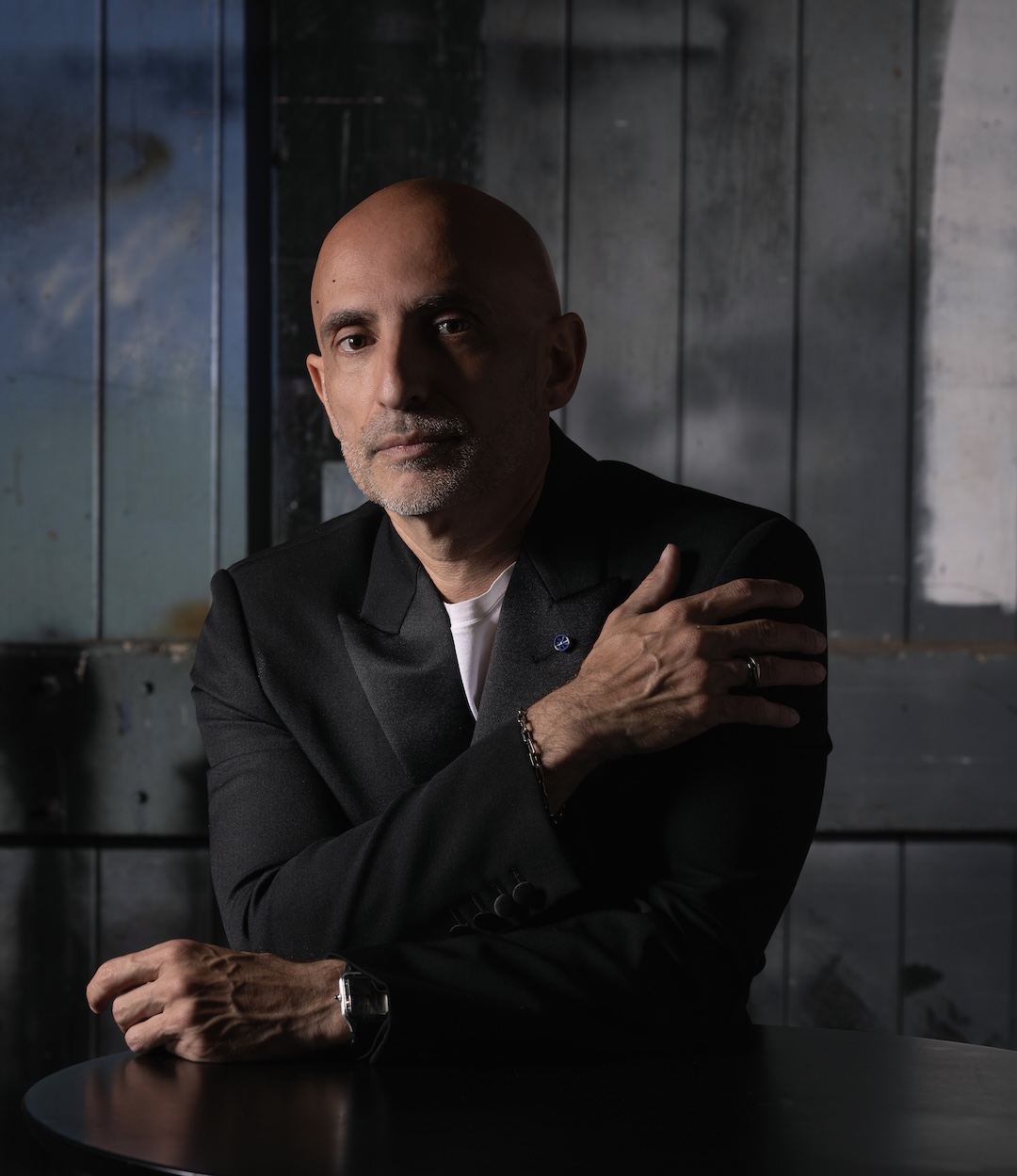
Continuum is described as “a bold exploration of the ever-shifting cadence that binds us to the world.” How did this idea of constant transformation influence your choreographic choices in Continuum?
I’ve curated this evening as an invitation for audiences to experience dance as an ever-evolving conversation—between past and present, between the individual and the collective, and between diverse artistic voices. My intention with this program is to spark connection, curiosity, and reflection, offering works that challenge, move, and inspire while revealing the transformative power of the body in motion.
Each choreographer brings a distinct perspective, yet all share a commitment to exploring the body in motion as a vessel for transformation. Through contrasting aesthetics, cultural resonances, and shifts in time, these works reveal how dance exists on a continuum—where moments build upon one another, find new meanings in fresh contexts, and affirm the enduring power of the human form to express what words cannot.
You’ve created the world premiere Spell within Continuum, which explores “the limits of emotional and physical expression.” What did you aim to conjure emotionally and physically through Spell, and how does it dialogue with the other works in the triple bill?
The title Spell itself suggests a duality—it can be something magical, but also something we fall under without even realising. Emotionally, I want to evoke an atmosphere that is at once intimate and volatile, where vulnerability and power exist side by side. There’s a ritualistic quality to the work, as if the dancers are caught inside a force they cannot quite escape—and it’s that tension which drives the movement and fuels the piece.
Within Continuum, Spell emerges as an intense, visceral heart—both contrasting with and speaking to the other works. While it shares the evening’s theme of transformation, it explores it through a lens of emotional ignition and fearless physicality.
In crafting Continuum, how did you balance moments of intimacy and expansiveness—especially when layering live elements like music and immersive lighting—to evoke that ebb and flow of life’s narratives?
In Continuum, each choreographer works with complete artistic freedom, without any direction from me. That independence brings out authentic contrasts and unexpected connections between the works. It’s this variety that invites audiences to engage on their own terms, discovering personal meanings and emotional threads that are unique to each viewer.
This triple bill seems to offer a journey through time and place—from twilight’s fleeting beauty to elemental breath. How do you want audiences to experience—and perhaps rethink—the relationship between movement, nature, and storytelling?
I always want audiences to come with an open mind and allow the experience to be unprescribed free to discover their own meanings and narratives. Dance has the unique power to be felt as much as it is seen, to resonate physically and emotionally in ways words can’t. I hope audiences leave with a renewed sense of how deeply movement is connected to the natural world, and how it can tell stories without language. Like nature, this evening is always in motion—emerging, transforming, and fading—so that each work becomes a landscape the audience can journey through, sensing their own place in the continuum of life
Looking ahead, does Continuum carve out a new direction or personal milestone for your artistic trajectory? What might this signal for your future choreographic explorations?
Continuum feels like both a culmination and a starting point. It gathers threads from my past work, my fascination with transformation, my love of collaboration, my search for emotional truth and weaves them into something that opens new doors.
Creating and curating this triple bill has changed how I see works interacting—how contrasting voices can strengthen shared themes. It’s inspired me to explore even more fluid boundaries between ideas, styles, and disciplines.
If it signals anything for the future, it’s that I’m interested in going further into that space where dance is not just movement, but an ongoing conversation—between artists, between forms, and between audiences and the world around them.
Continuum runs through November 1 at the Roslyn Packer Theatre.
You may also like.
Inside the $30 Billion Obsession Among the Ultra-Wealthy : A Race to Live Longer
The pursuit of an extended life has become a new asset class for those who already own the jets, the vineyards, and the art collections. The only precious resource left to conquer, it seems, is time.
If you want to know what the latest obsession is these days among the ultra-wealthy, listen in at dinner.
Once it was crypto, then came AI and psychedelics, now it’s longevity all the time. The talk is of biomarkers, NAD+ levels, and methylation clocks, of senolytics and stem cells. Guests compare blood panels like wine lists, and the most important name to drop is no longer your banker or contact at Rolex but your longevity physician. For those just arriving at the conversation, the new science can sound like science fiction—but it’s fast becoming the lingua franca of money.
The field has its own vocabulary—epigenetic reprogramming, which aims to reset cellular clocks; cellular senescence clearance, the removal of “zombie” cells that clog our systems as we age; precision gene therapies, designed to personalise interventions at the level of DNA—that sounds equal parts Brave New World and Wall Street pitch deck. But make no mistake: this is no longer a niche pursuit. The sector is already worth an estimated $30 billion globally and projected to surpass $120 billion within the decade, having attracted billions in investment from the likes of Altos Labs, Juvenescence and Google-backed Calico. Tech titans and old-money families alike are staking claims on the possibility of an extra decade or two. It’s a space where venture funds court Nobel laureates, hedge funds bankroll gene-therapy moonshots, and even wellness festivals in Australia draw rock-star scientists to the stage.
The Poster Child and the Pitch
David Sinclair, the Sydney-born Harvard geneticist who has become something of a poster child for the field, is quick to underline the stakes. “We’re not just talking about lifespan, we’re talking about health span,” he tells Robb Report. “Extending the number of years people live well—without frailty, without disease—isn’t just a medical breakthrough. It’s a social and economic one.” Sinclair, whose research ranges from NAD boosters to epigenetic age-reversal therapies, has calculated that adding a single year of healthy life to the US population, for example, could be worth $38 trillion in economic benefit—fewer years of costly aged care, less burden on hospitals, more years of productivity and compounding returns. In other words, the dividends of health are financial as well as personal. “That’s why governments and investors are paying attention,” he says.
Sinclair has become a fixture on the global circuit, drawing crowds that rival TED or Davos. As Radek Sali, the Australian entrepreneur behind the new Wanderlust Wellspring longevity festival taking place on the Gold Coast this October, where Sinclair is the keynote speaker, puts it: “Wellness has moved into the realm of entertainment.” At Wellspring, platinum-tier guests pay up to nearly $2,000 for the privilege of hearing scientists and investors share the stage over a weekend like headliners at Coachella.
Investing in Time
And then there are the sideshows. Bryan Johnson, the tech mogul turned human guinea pig, makes headlines with his open-source, organ-by-organ data tracking—his infamous “penis readings” have become cocktail-party fodder. While many dismiss him as a parody of the field, his multimillion-dollar project Blueprint has nevertheless made longevity impossible to ignore in the mainstream.
For the uninitiated, the science of longevity today is no longer about vitamin salesmen or fringe dietary regimes. This is the new frontier—one where biology is not just observed but engineered, and where investors smell opportunity on par with space travel. It’s little wonder that Altos Labs has raised billions to chase cellular rejuvenation, or that Juvenescence has secured more than $400 million to fast-track therapies. What was once the realm of eccentric tinkerers now attracts sovereign wealth funds.
“This body takes me to meetings, earns me money—why not invest time and money into it?”
The appeal to the One Percent is obvious. Longevity is a natural extension of portfolio thinking: diversify your assets, hedge your risks, and above all, maximise return on investment. Except in this case, the returns are measured in years of health, energy and cognition. As Andrew Banks, a Sydney-based entrepreneur and early investor in Juvenescence, explains: “This body takes me to meetings, earns me money—why not invest time and money into it?” His Point Piper home teems with contraptions—a Reoxy breathing machine, hydrogen therapy, red-light sauna, and he spends a few hours a day on maintenance, as if his body were a private equity stake.
Banks, like others in his cohort, is baffled that more wealthy men haven’t followed suit. “Entrepreneurs pride themselves on divergent thinking,” he says. “They expand, dream and create businesses with it. But when it comes to their bodies, they’re convergent—unimaginative. The lack of curiosity is astonishing to me.”
Medicine 3.0 and the New Rituals
Steve Grace, a Sydney-based entrepreneur and the proprietor of exclusive private networking club The Pillars, which is opening a longevity program, thinks there is a reckoning coming for those who do not take matters into their own hands. “As someone who has run a few recruitment businesses,” he says, “I can tell you that if you’re a man or woman in your 50s and working as an employee, even in a really good position, it’s time to get worried about job security and being aged out of the workforce. You have to make yourself as vital as possible and become the best version of yourself, or you’re toast.”

What was once fringe has now become a cultural necessity for those who can afford anything, with science finally catching up to ambition. Sinclair’s lab at Harvard recently published a study on the reversibility of cellular ageing—restoring vision in blind mice and setting the stage for human trials in conditions like glaucoma. In Boston, his company Life Biosciences will begin treating patients with blindness in a Phase I trial using partial cellular reprogramming early next year. “This isn’t science fiction anymore,” Sinclair says. “We’re at the point where we can reprogram cells, turn back their biological clocks, and restore function.”
Meanwhile, practitioners like Dr. Adam Brown of the Longevity Institute in the Sydney suburb of Double Bay are reinventing diagnostics. His “assessment menu” has been compared—only half-jokingly—to a Michelin Guide for medical testing: full-body MRI scans, continuous glucose monitors, polygenic risk scores. “What we do is proactive, not reactive,” he says. “Correct deficiencies first, then optimise health. That’s how you get peak performance in the short term and resilience in the long term.” Brown frames longevity in terms that would resonate with any investor: “There’s a short-term ROI—fixing glucose or sleep issues so you perform better tomorrow. And there’s a long-term ROI—functioning in your 70s as you would in your 40s. That’s extending your career, your income potential and your independence.”
“Once upon a time, male vanity meant injectables, veneers and a tan. Today, it’s VO2 max scores and continuous glucose monitor readouts.”
Peter Attia, the Canadian-American physician and podcast host who has helped popularise the concept of “Medicine 3.0”, echoes this emphasis. Medicine 1.0, according to him, was about surviving infections. Medicine 2.0 was about treating chronic disease. Medicine 3.0 is about staying ahead of decline: measuring, monitoring and intervening early. “The goal is not just to avoid disease but to lengthen health span,” Attia has said.
For those already converted, longevity is less about lab science than daily rituals. Sydney-based Chief Brabon, who trains CEOs like athletes, says: “These men are like Formula One cars—you don’t wait until the tyres are bald before swapping them. You keep everything tuned, precise, optimised.”
That tuning now involves more gadgets than ever: hyperbaric oxygen chambers, cryotherapy, sauna/cold-plunge circuits, peptide stacks, nootropics. And yes, a glut of supplements, some with evidence, others little more than wishful thinking. Once upon a time, male vanity meant injectables, veneers and a tan. Today, it’s VO2 max scores and continuous glucose monitor readouts. “Health is the new flex,” as Steve Grace quipped, glancing at his wrist-worn biometric tracker.
The New Flex: Health as the Ultimate Luxury
Still, there is plenty of scepticism. Some therapies are unproven, others prohibitively expensive. And there is the unavoidable fact that many leading scientists, including Sinclair, have stakes in companies producing supplements and therapeutics, raising eyebrows about conflicts of interest. “The difference,” Sinclair insists, “is whether it’s backed by peer-reviewed science and measurable biomarkers. If it can’t be quantified, it’s marketing, not medicine.”
Then there are the contradictions. It promises democratisation while often priced like a private club. It champions science but thrives on hype. It seeks to extend health span but risks deepening class divides. “Only if we let it,” Sinclair says when asked if longevity risks becoming the preserve of the wealthy. “Like antibiotics or aspirin, these advances should become widely available and affordable once they scale.” Sali agrees, but from another angle: “Biohacking doesn’t have to be expensive,” he says. “The blue zones prove that—community, diet, movement, purpose. Those are free. Wellspring is about making that knowledge accessible.”
And yet, for all its shortcomings, the movement is here to stay. Investment continues to pour in. Technology—like senolytic drugs that clear aged cells or AI-driven platforms that predict individual disease risk years in advance—is moving from speculation to clinical trial. Scientists are being recast as influencers. And the wealthy, always in search of the next advantage, have found in longevity a pursuit as old as alchemy, yet dressed in the language of venture capital. The truth is that health has always been an asset. What’s new is that it’s now being traded, optimised and measured like one.
In the end, longevity is less about a moonshot than about curiosity. Banks, Sali, Sinclair, Attia are all, in their own way, betting on time. Perhaps the most radical idea is also the simplest: that the best-performing asset in any portfolio is the body itself. Unlike Bitcoin, it carries you to meetings. Unlike art, it cannot be stored in a vault. Unlike real estate, it is non-transferable.
The new calculus of longevity is the recognition that the ultimate luxury is not wealth or status, but a few more decades of clear thought, strong bones and good company—and the ability to make money off it. Everything else, as one investor put it, is just a rounding error.
You may also like.
How Sailing Shaped Loro Piana’s Most Iconic Designs
Pier Luigi Loro Piana grew his family textile business into a celebrated fashion house by following his passion for sports on land and at sea.
The Regatta Connection
The race village at Port de Saint-Tropez is awash with people in nautical navy and white, the de facto dress code for the Loro Piana Giraglia regatta. This is the second year the fashion house has lent its name to one of the Mediterranean’s most prestigious summer races. The course zooms from the French coast to Genoa, Italy, taking a sharp turn past Giraglia, a small island off Corsica’s northern tip. It’s the latest in a long line of marine events the brand has sponsored, dating back more than 20 years.
The link between sailing and the brand—and more consequentially the Loro Piana family—is exemplified by the man Robb Report is here to meet: Pier Luigi Loro Piana. An avuncular figure in his 70s with the physique of a man who has enjoyed life, Pier Luigi fell in love with sailing in his late teens, when a family friend took him for a cruise in a sloop.
“Using the wind to go faster or slower, driving the boat like it has an engine, it’s really fascinating,” he says. Inevitably, he started competing. “When you’re sailing, you’re always looking for other boats to go and fight with. It’s an instinct,” he says. And then, with considerable understatement, “I think it’s a nice hobby.”
A Life Under Sail
He currently owns two boats: My Song, which you can see on these pages, is a 25 m sailing yacht that competed in the Regatta. There’s also Masquenada, a comfortable 50 m explorer. It’s a commendable set-up befitting a man who shaped one of Europe’s most celebrated fashion houses.
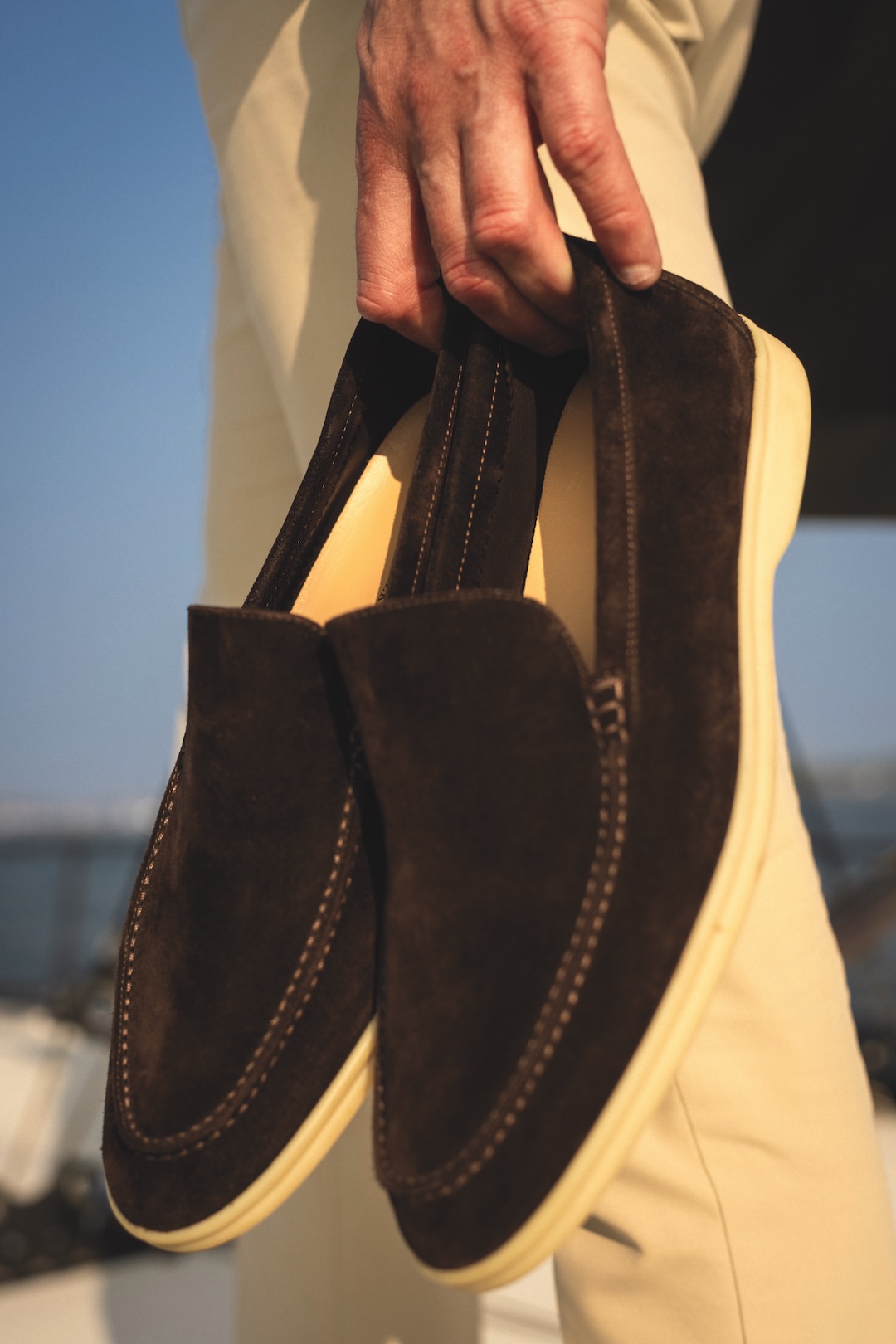
A Family Business Turned Global Powerhouse
The textile and clothing company that bears his family’s name was launched by an ancestor, Pietro Loro Piana, in 1924. A few generations later, Pier Luigi and his brother, Sergio, would run it for four decades until LVMH acquired a majority stake for around $4 billion in 2013. Sergio passed away that year; his widow and Pier Luigi still own a share of the brand between them.
The brothers proved innovative custodians, moving the company upmarket with an insistence on ultra-fine materials and groundbreaking fabrications. And the connection with sports—specifically yachting, horseback riding, skiing and golf—is integral to how the brand positions itself. As Pier Luigi recalls, such associations often had self-serving origins.
“These are the sports my brother and myself were doing,” he says. “We were very committed in business in the 1970s, ’80s, ’90s, so we were like our customers: people that like to work hard but also play hard. And that meant sports.”
Innovation Born of Necessity
This affinity often led them to develop durable, yet elegant, materials and gear for their off-duty pursuits, eventually offering versions to their athletic clientele. “We engineered products with unusual properties, natural fibres like wool or cashmere with a membrane that makes it waterproof and windproof… For research and development, I was the first victim,” he says with a chuckle. Once, he wanted a ski jacket that was “warmer, lighter, softer and better” than nylon models, so he made a prototype to test on the slopes. It gave birth to the Loro Piana Storm System, launched in 1994. The line’s wind-resistant waterproof wool and cashmere has since been used by brands around the world. “I still have this jacket,” he says.
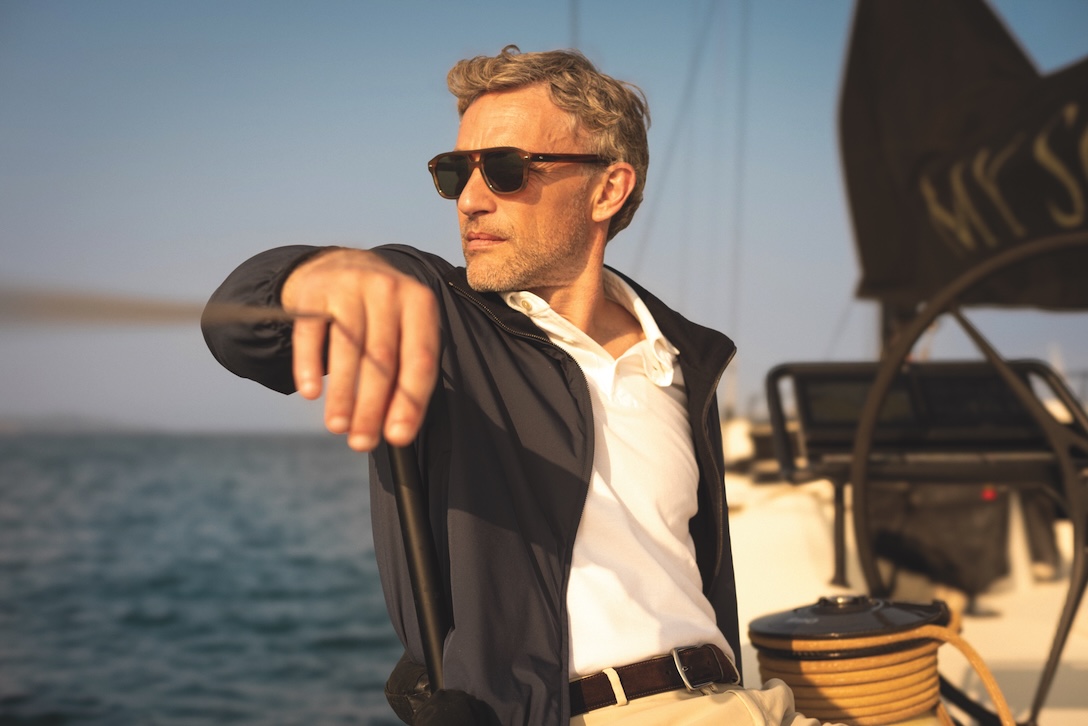
The same process happened on the water. A beloved reversible bomber, with knitted cashmere on one side and waterproof polyester on the other, was born from Pier Luigi’s need for a functional jacket to wear on his yacht. “It’s very light, doesn’t wrinkle, it’s warm, windproof,” he says. “It solves so many problems.”
He takes less credit for perhaps the brand’s most famous—and almost certainly most imitated—product, the white-soled suede Summer Walk loafers. “That was my brother,” he says. “When we were 20, 30 years old, we went sailing and there were only [Sperry] Top-Siders or Sebagos. But when the soles got worn, they got hard and slippery.”
The answer: a non-marking sole with grip—“like a tire you use in Formula 1 when it’s wet”—which Sergio got his bespoke shoemaker to sew to suede uppers. Eventually, they produced two versions: a loafer and the Open Walk, a model with a slightly higher top. “We discovered people were using them also for formal wear because they were so comfortable,” says Pier Luigi. “It’s really a successful story that started from product research.”
And if problem-solving can turn your family business into a giant of global style, clearly it pays to be a little selfish.
You may also like.
The Supercar of Pool Tables
In a rare fusion of Italian design pedigree and artisanal craftsmanship, Pininfarina and Brandt have reframed the barroom game as aerodynamic high art.
In the rarefied realm where leisure meets design, the latest object of desire doesn’t purr down the autostrada—it commands the room from a single sculptural base. The Vici pool table, a collaboration between Italian automotive legend Pininfarina and Miami’s bespoke table-maker Brandt Design Studio, reimagines the game with the same aerodynamic poise and artisanal precision that have graced some of the world’s most beautiful vehicles.
Named for Julius Caesar’s immortal boast—“Veni, vidi, vici”—this limited-edition series transforms billiards from casual diversion into a declaration of style. Every curve is deliberate, from the ultra-thin playing surface clad in tournament-grade Simonis cloth to the seamless integration of Italian nubuck leather and precision-milled metals. The effect is more haute sculpture than barroom pastime—yet it meets exacting professional standards.
For the true connoisseur, the debut PF 95 Anniversario edition celebrates Pininfarina’s 95-year legacy in just 95 numbered pieces. Finished in dark-blue lacquer with rose-gold accents and a flash of red felt, each table is discreetly nameplated—a tangible claim to an heirloom in the making.
“It’s not just about how it plays—it’s about how it lives in a space,” says Dan Brandt, the master craftsman whose work has long graced the world’s most exclusive interiors. Whether anchoring a penthouse salon, a members’ lounge or the main deck of a superyacht, the Vici is designed to stir conversation before the first break.
For those accustomed to Pininfarina’s sleek automotive silhouettes, this is a chance to bring that same lineage of movement, form and Italian refinement into the home. Only now, the horsepower is measured not in engines—but in the geometry of a perfect shot.
From pool to midcentury to Ottoman, we’ve got all the table angles covered at Robb Report Australia & New Zealand —plus more home-worthy pieces.






